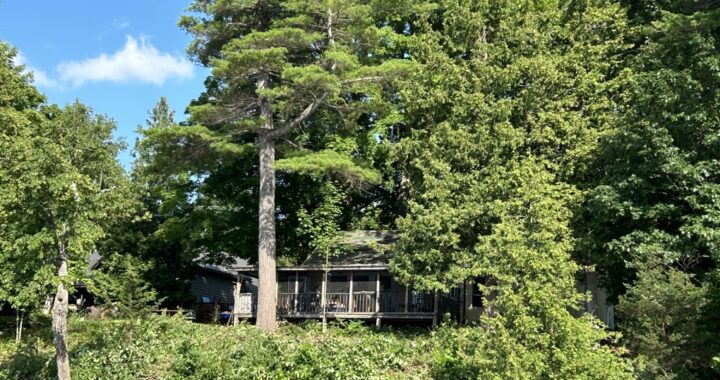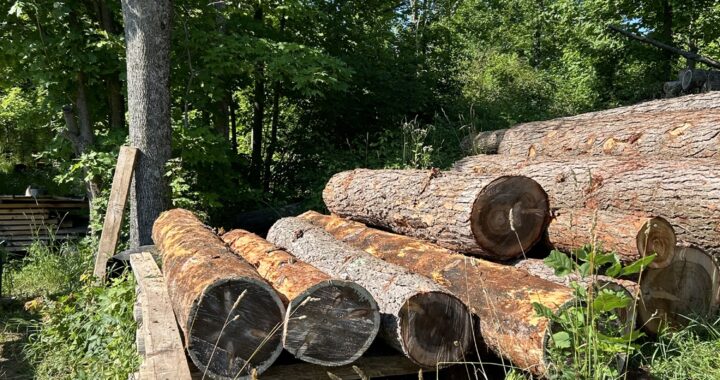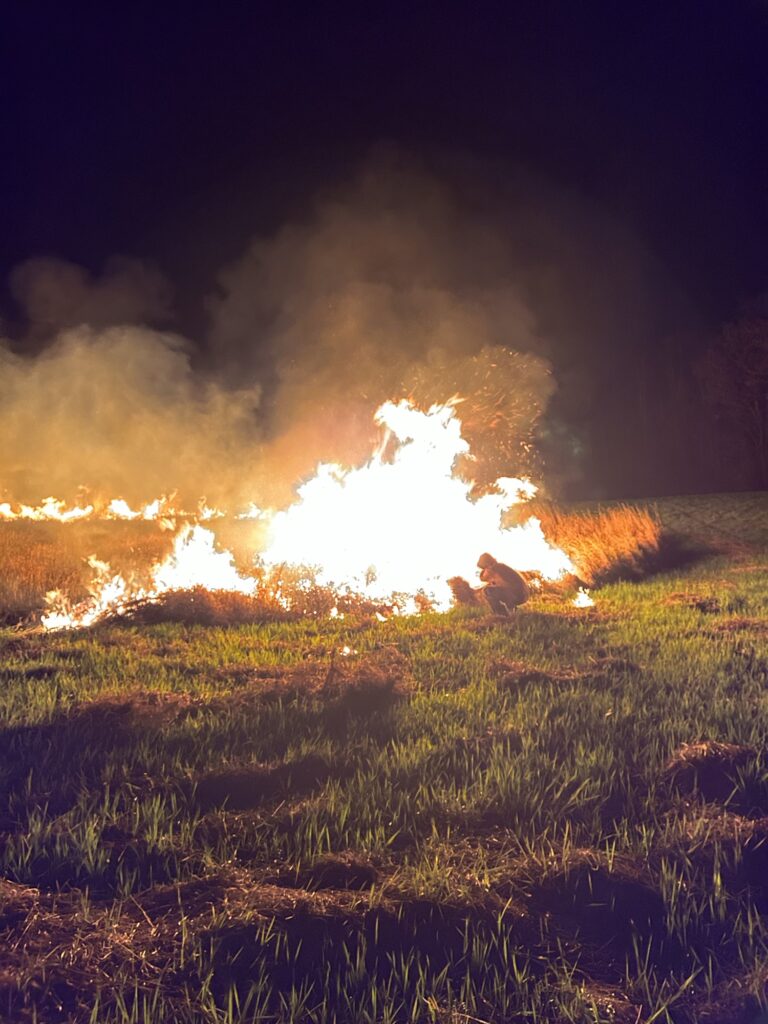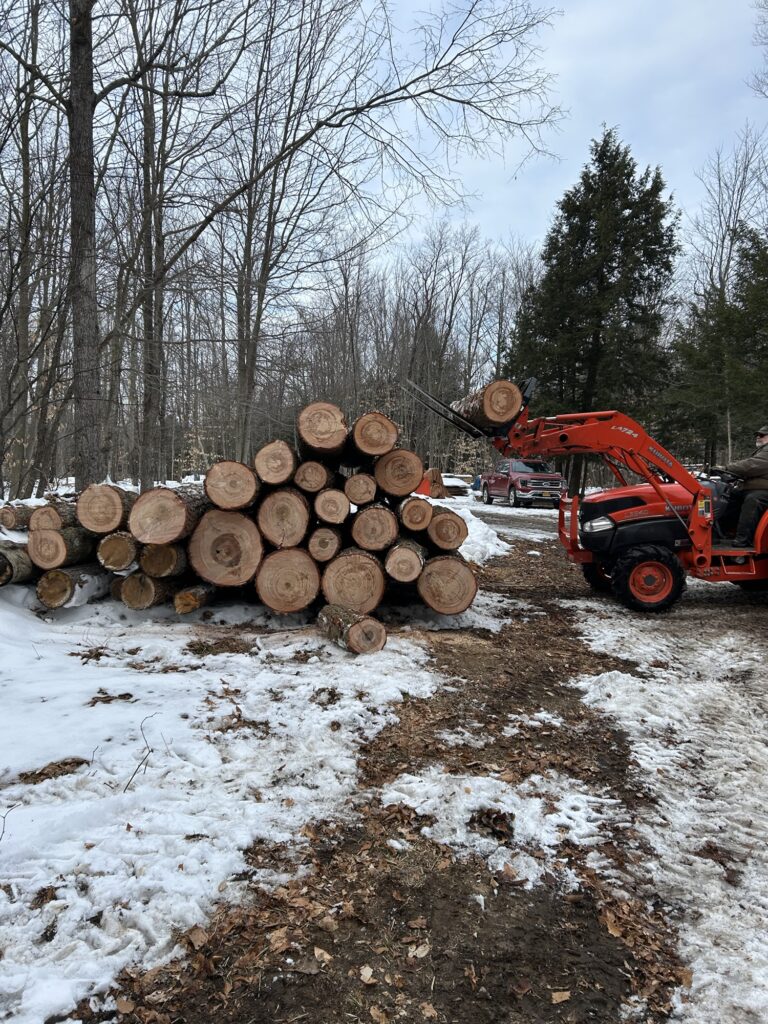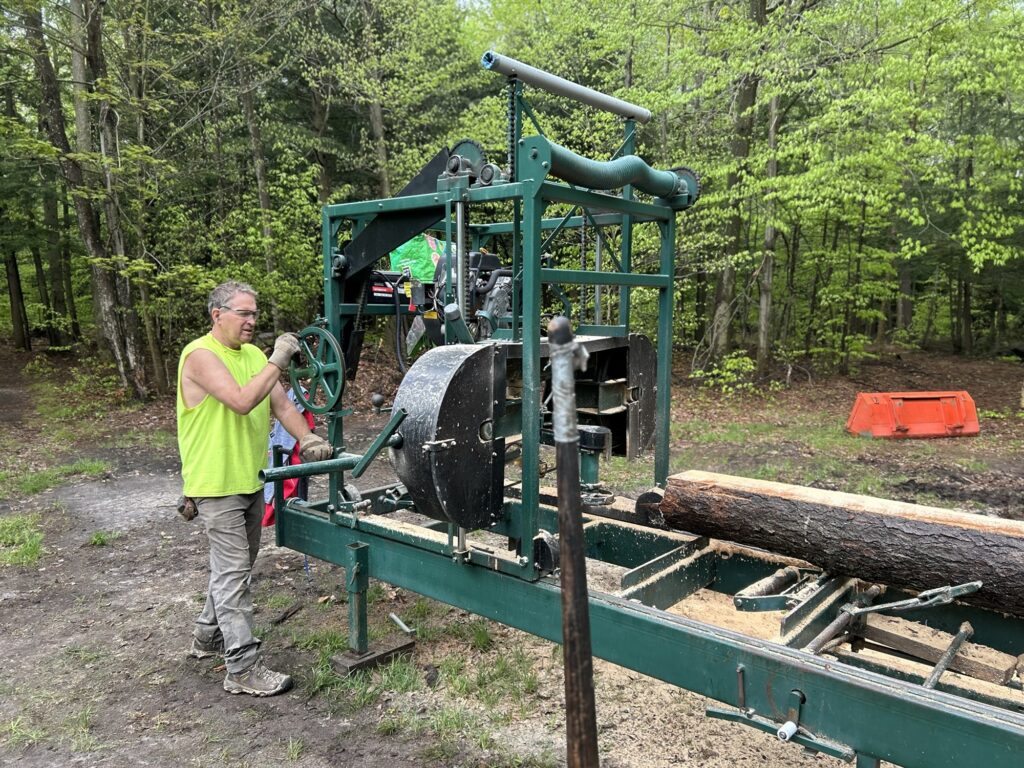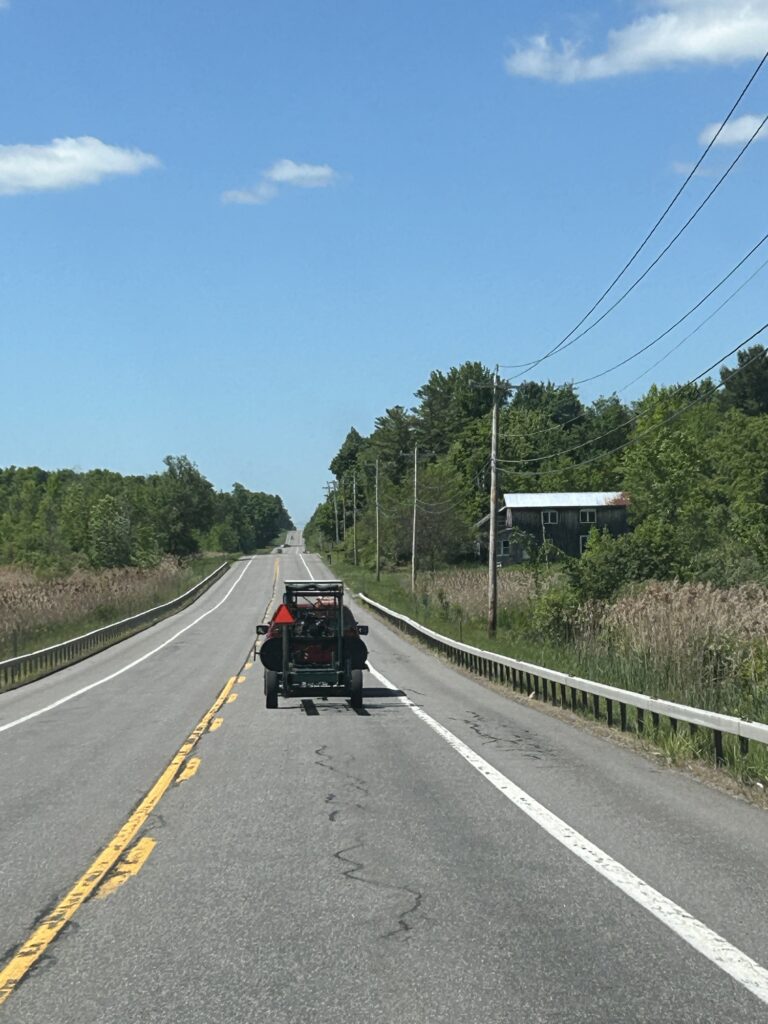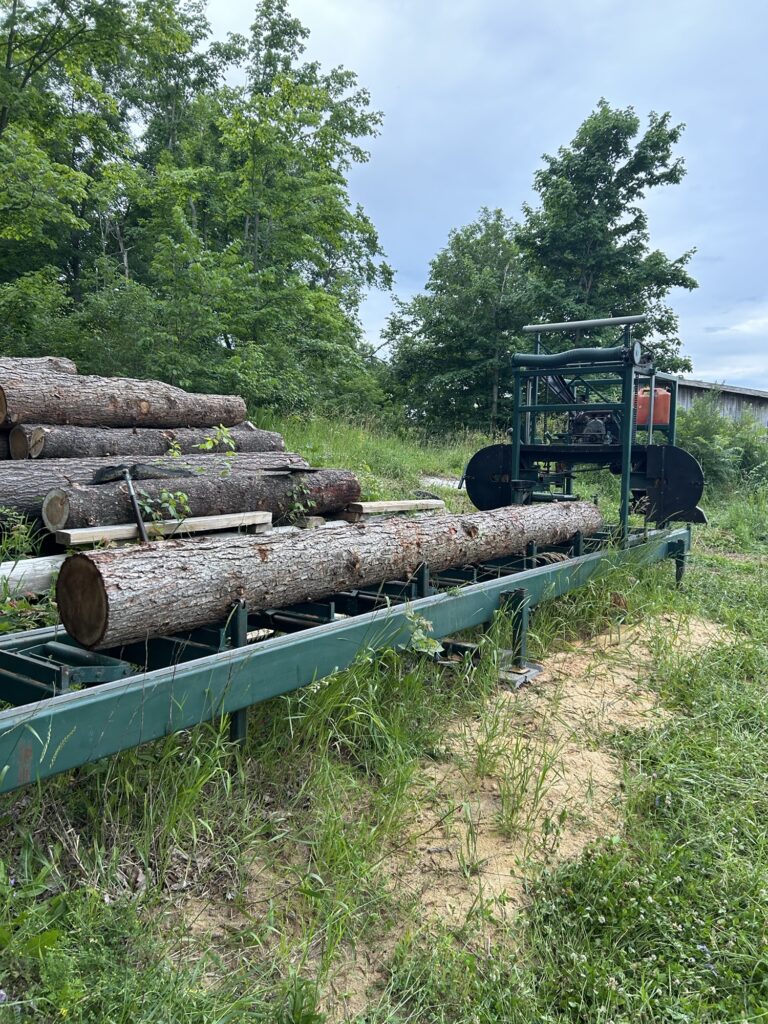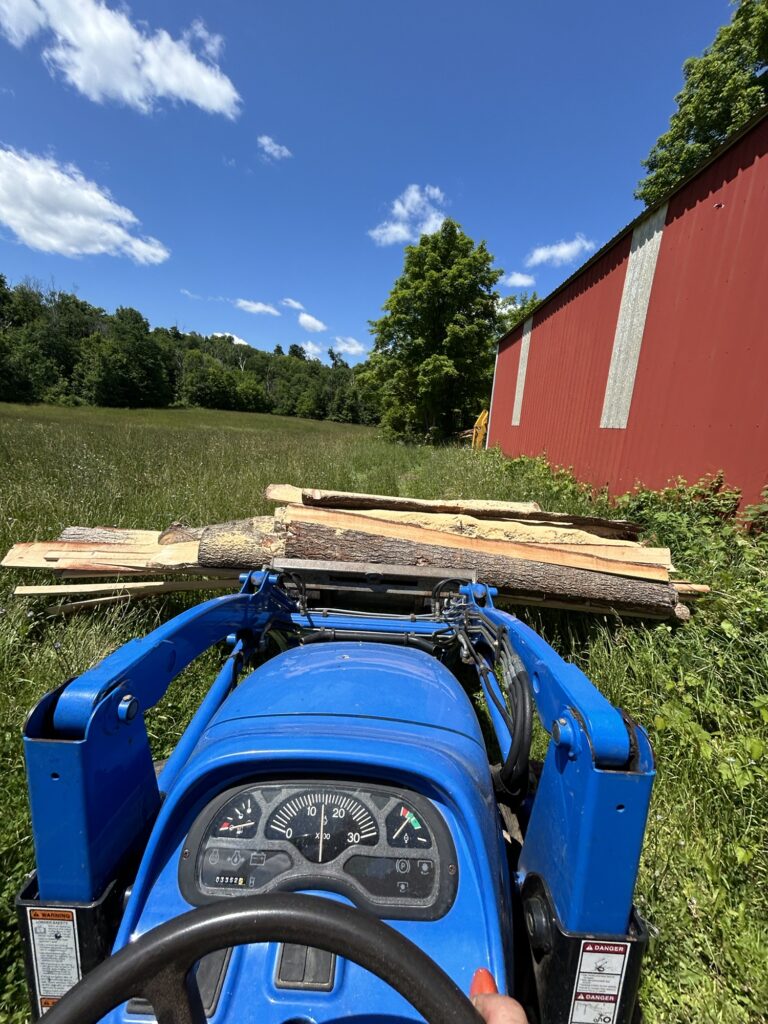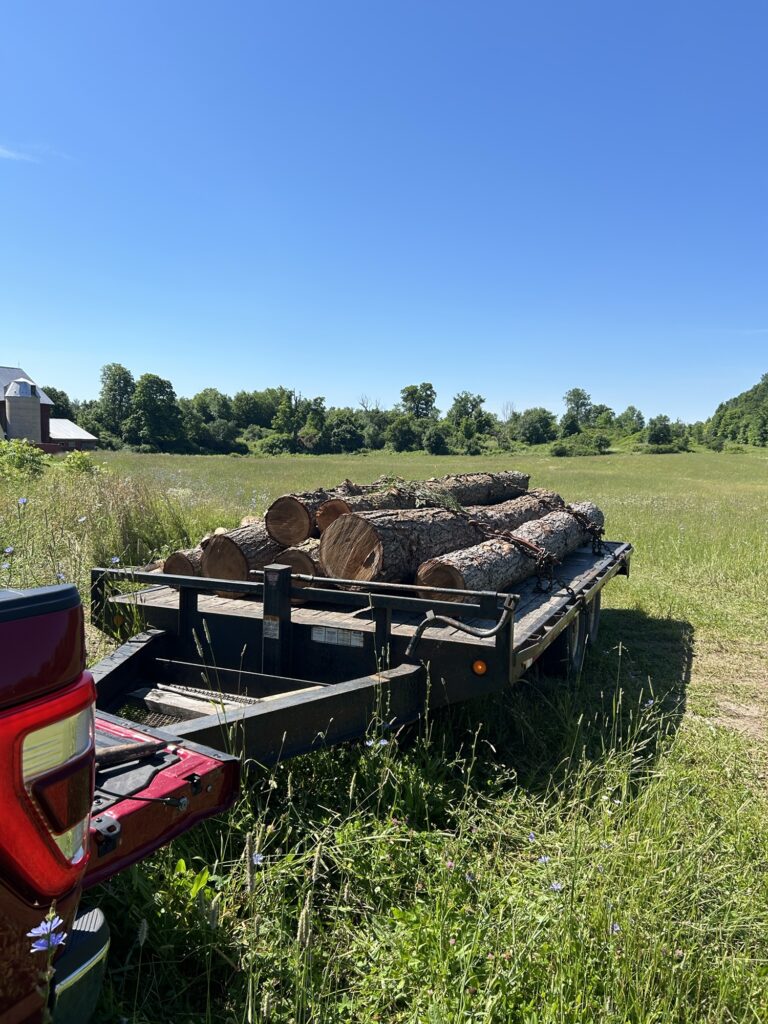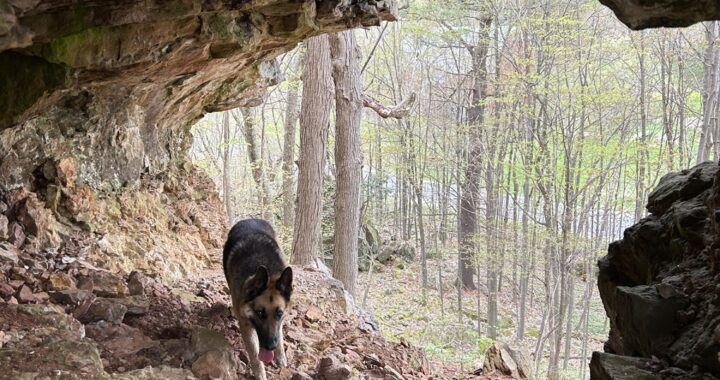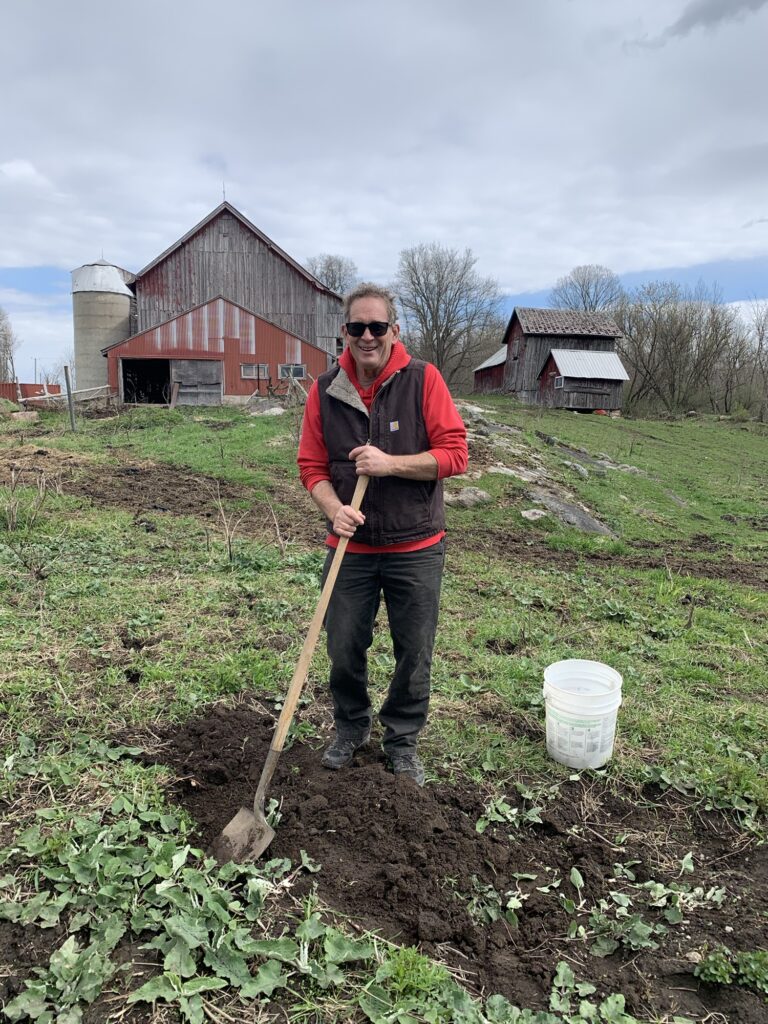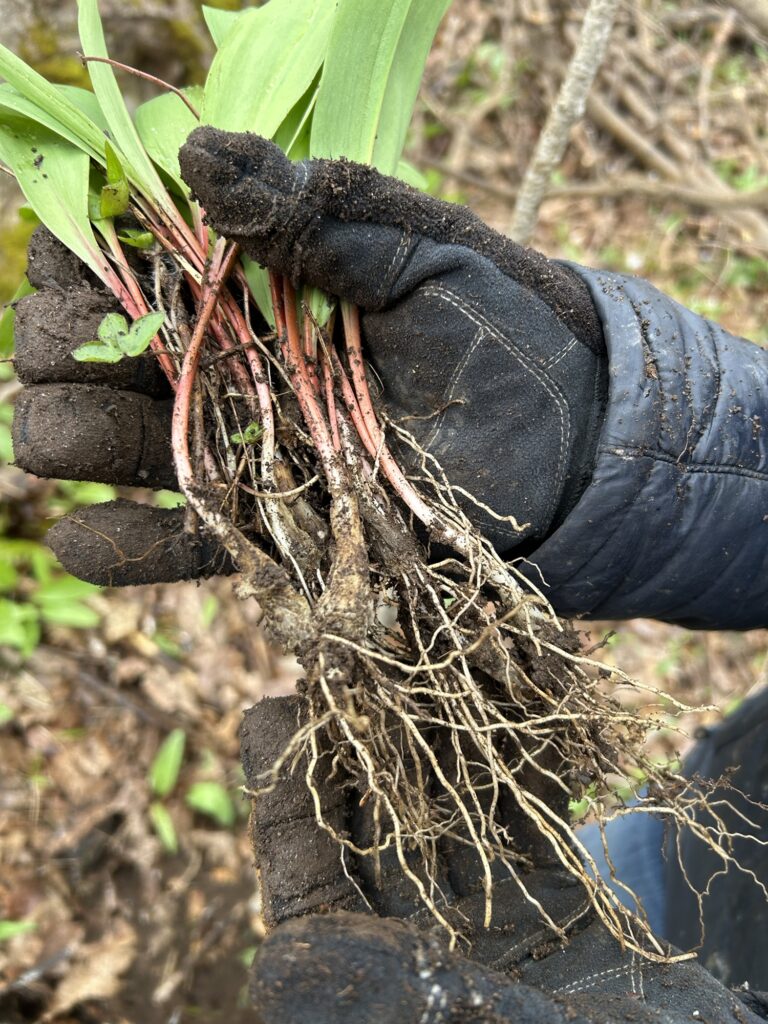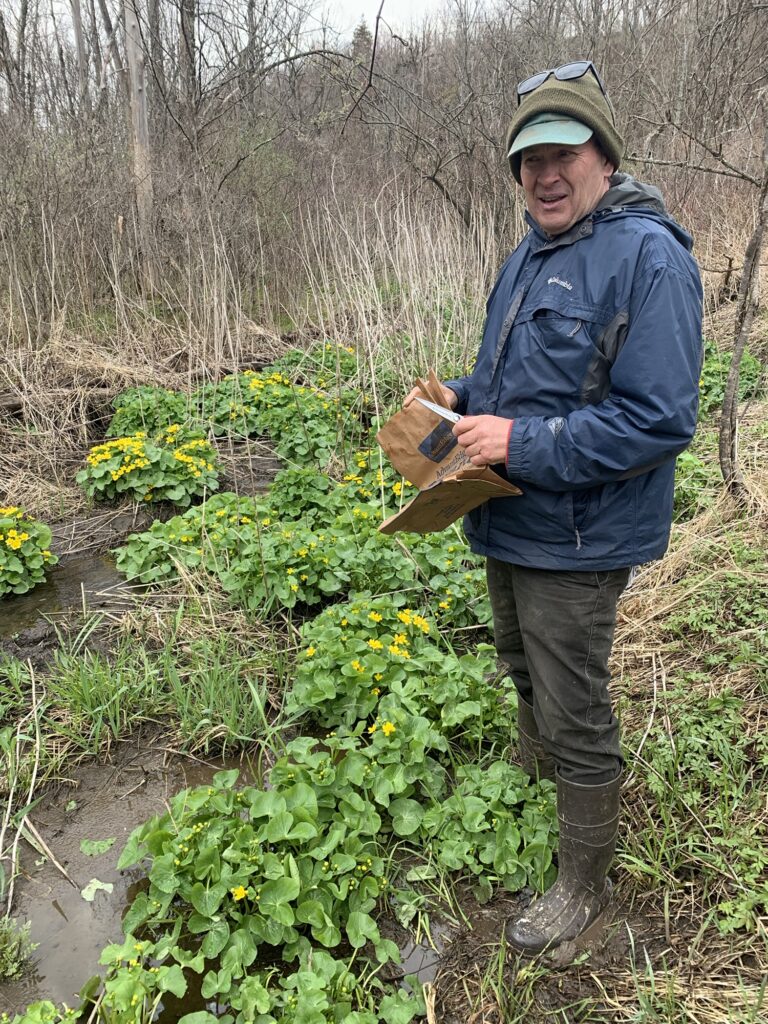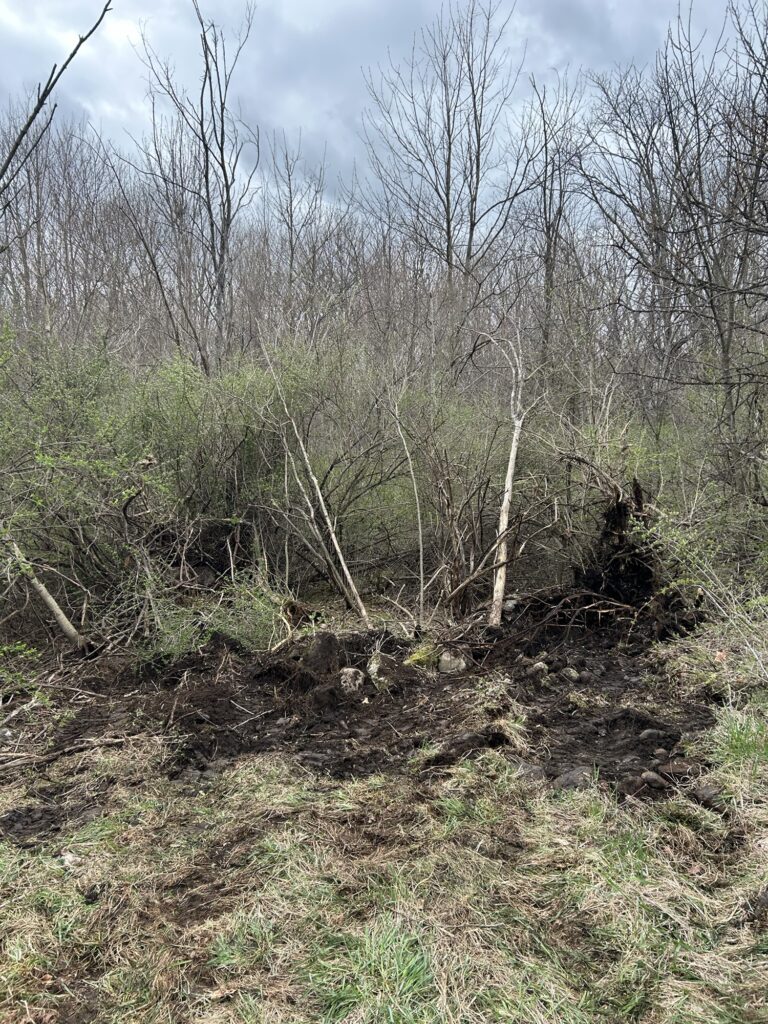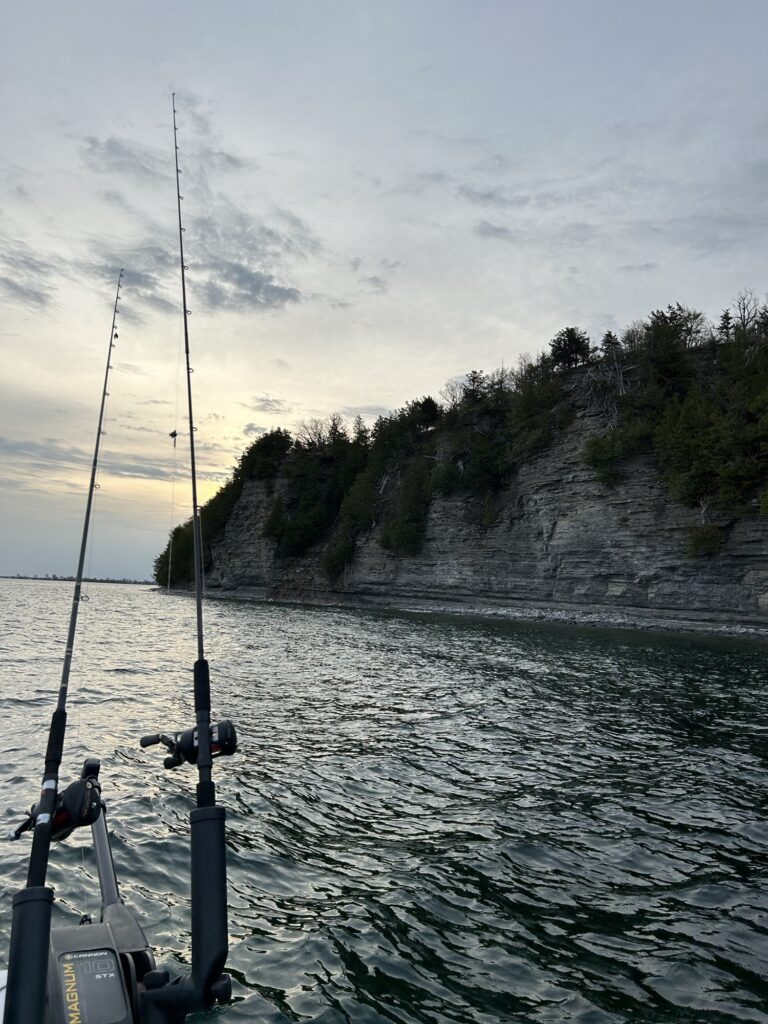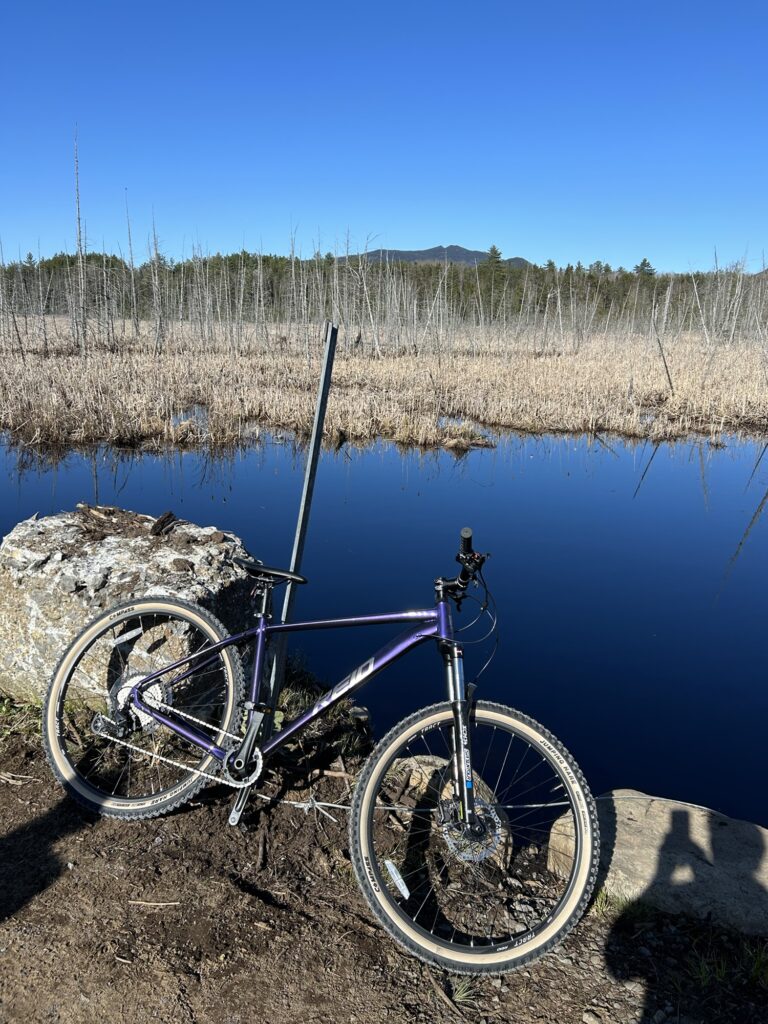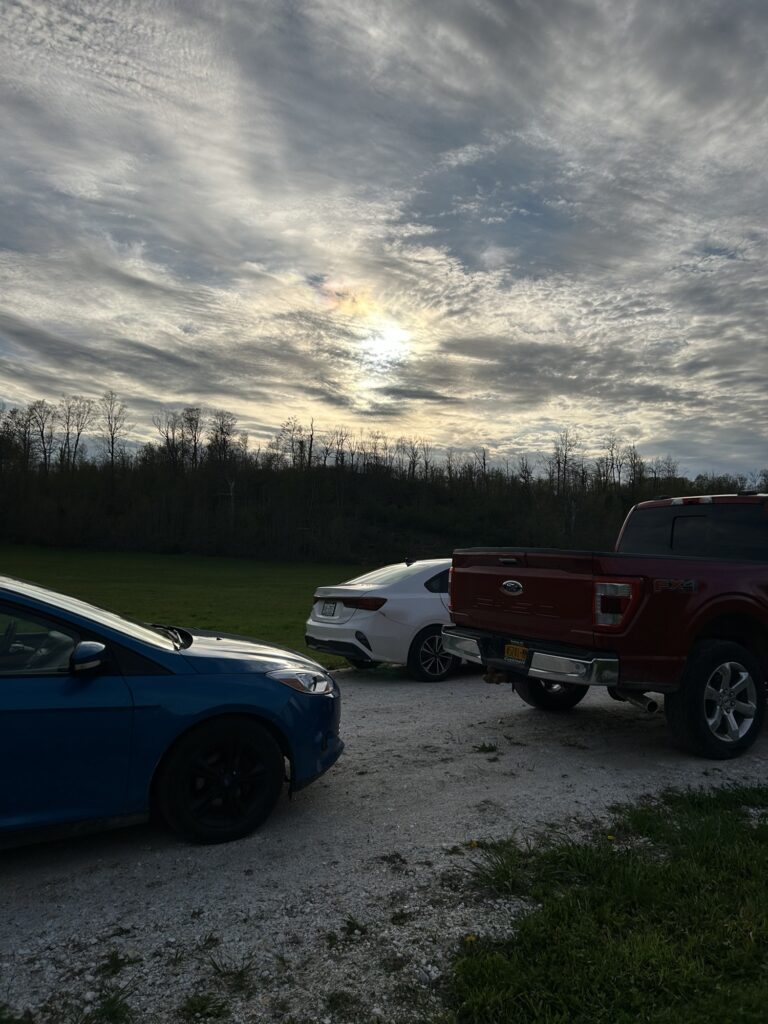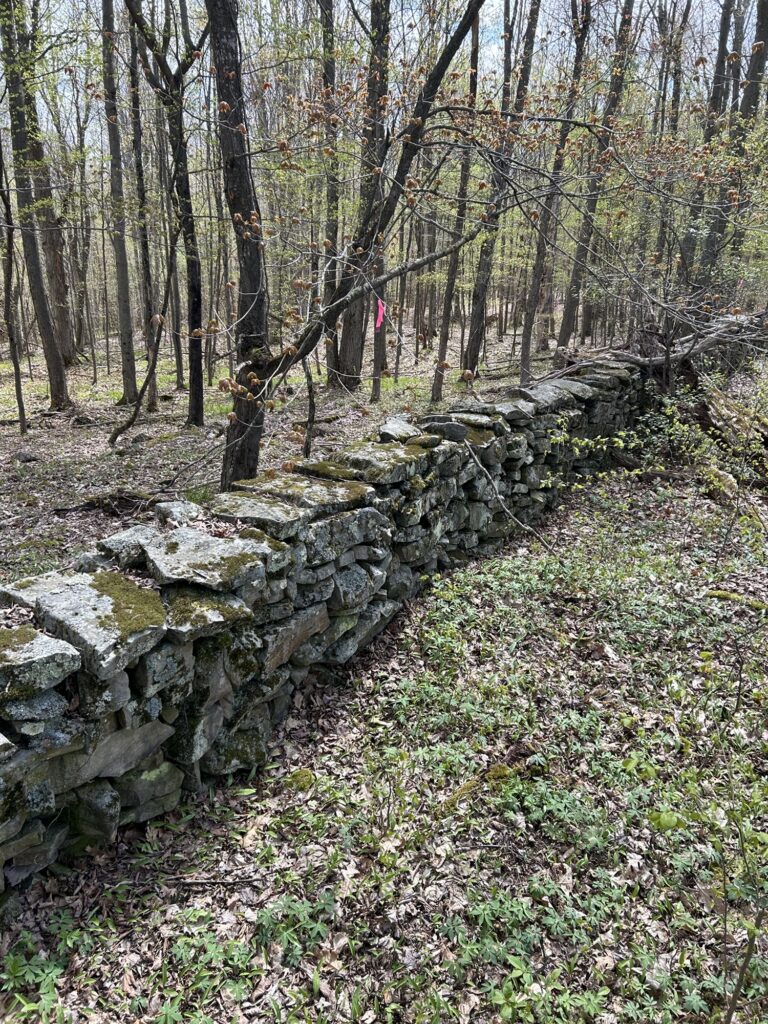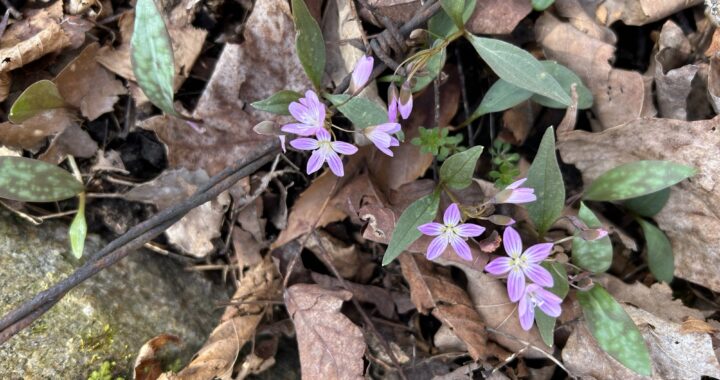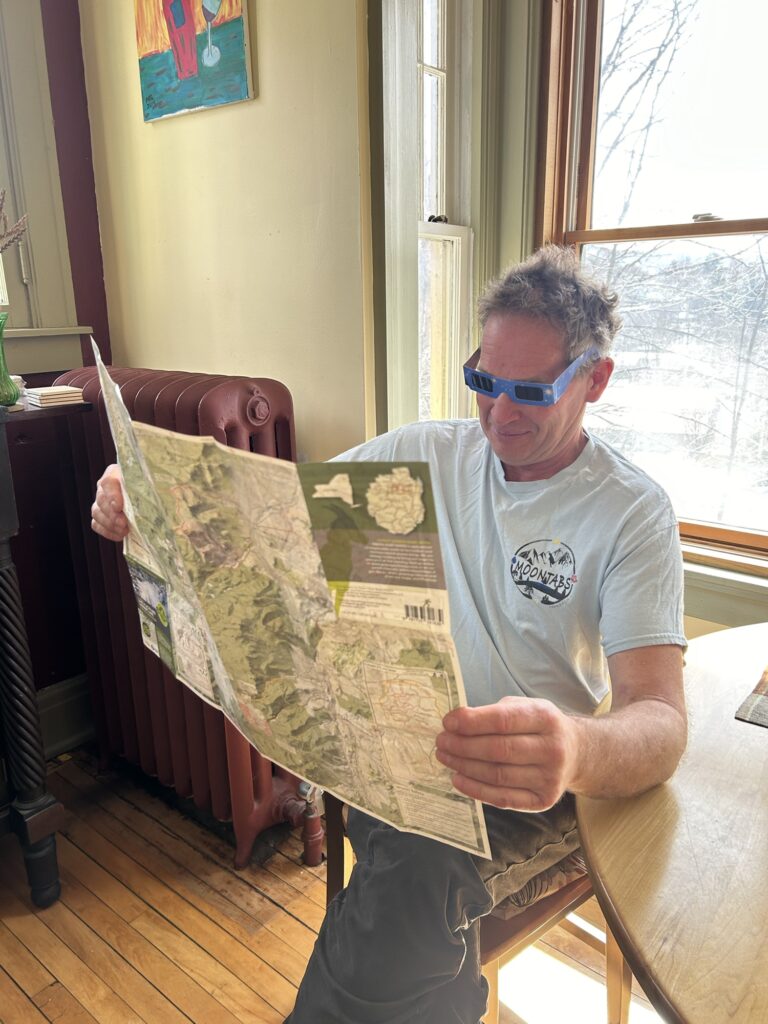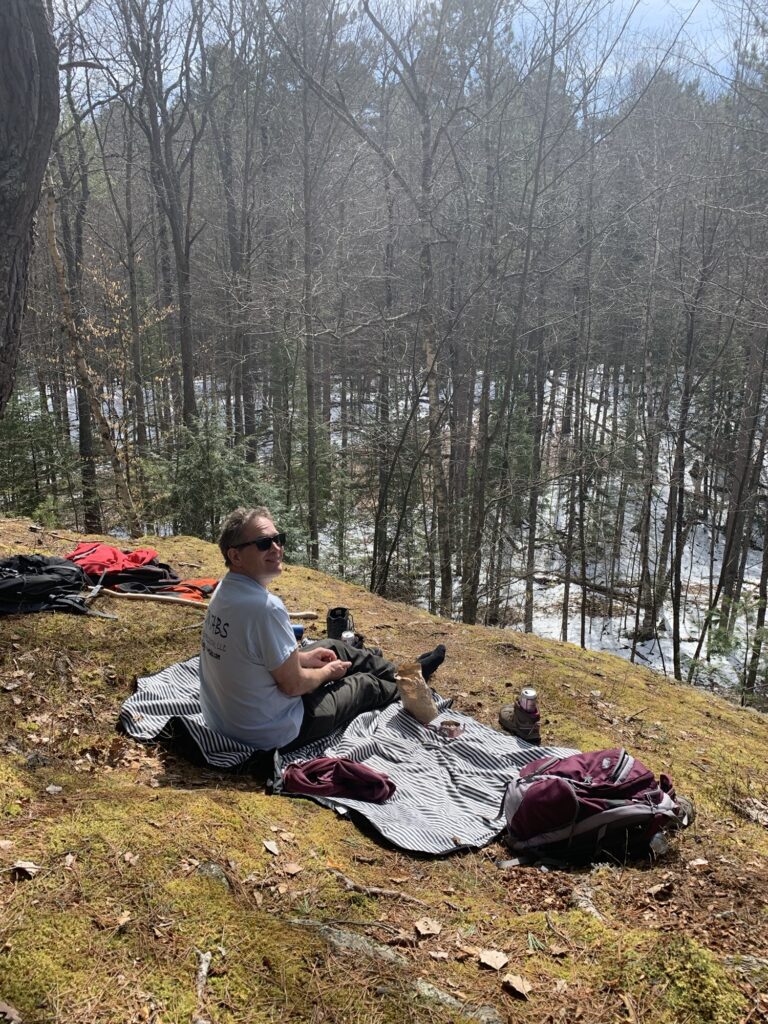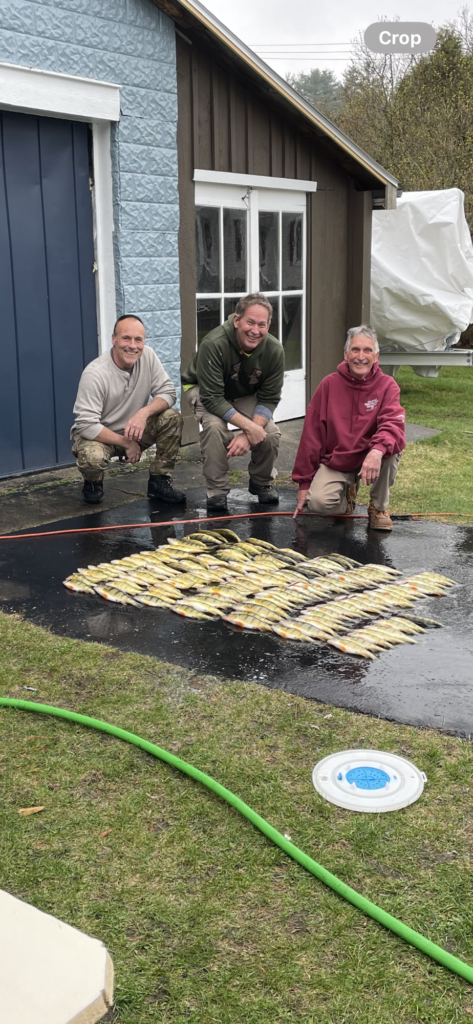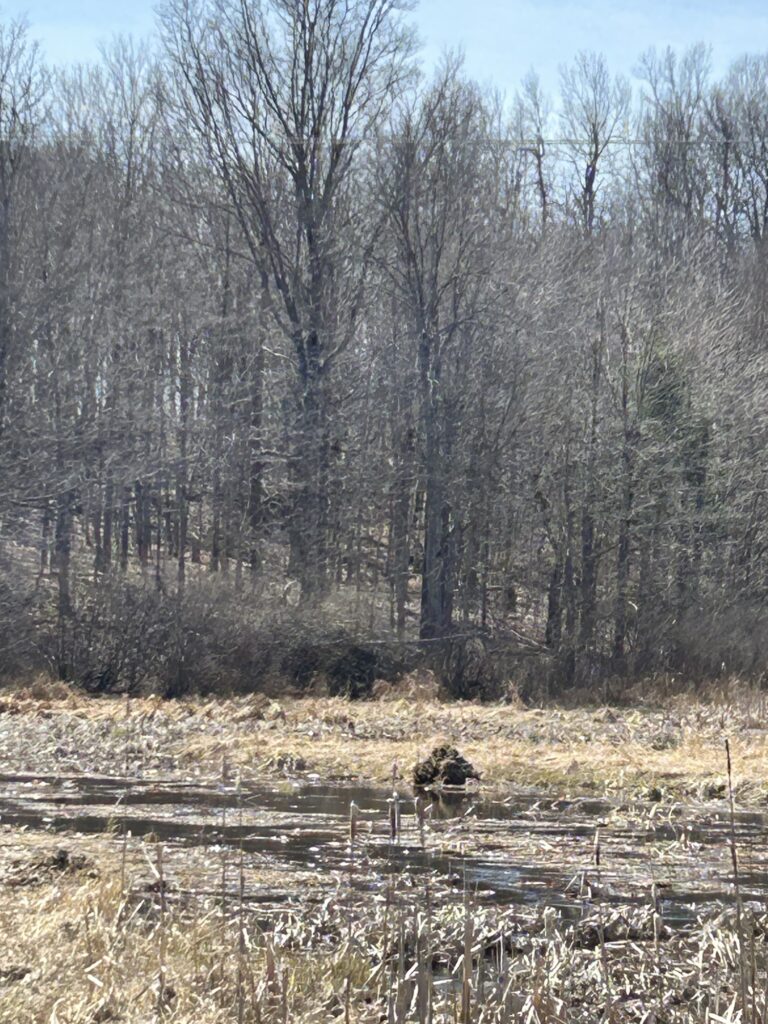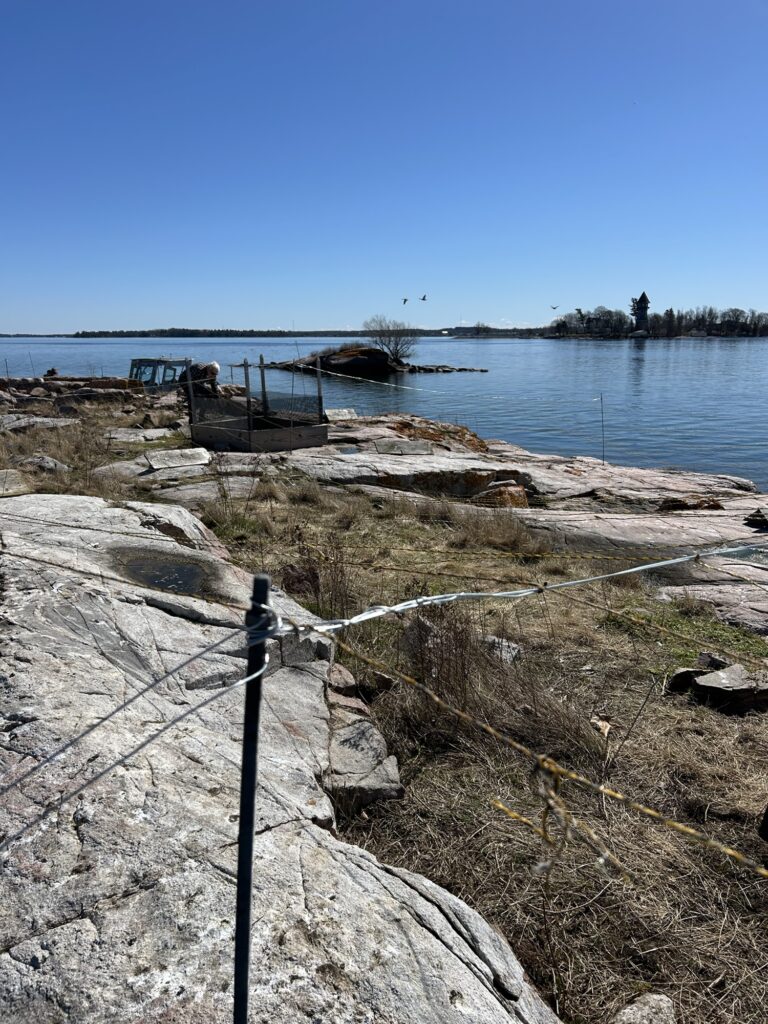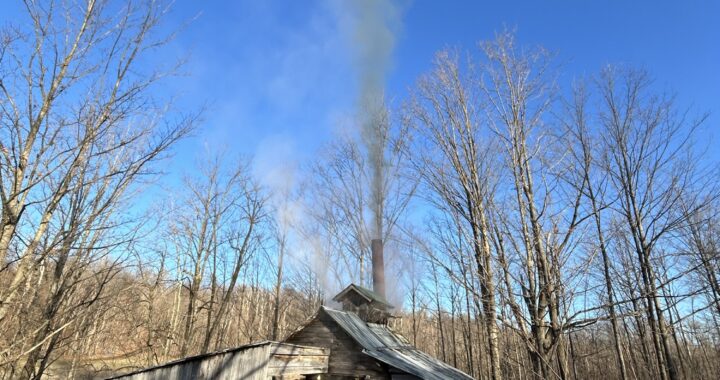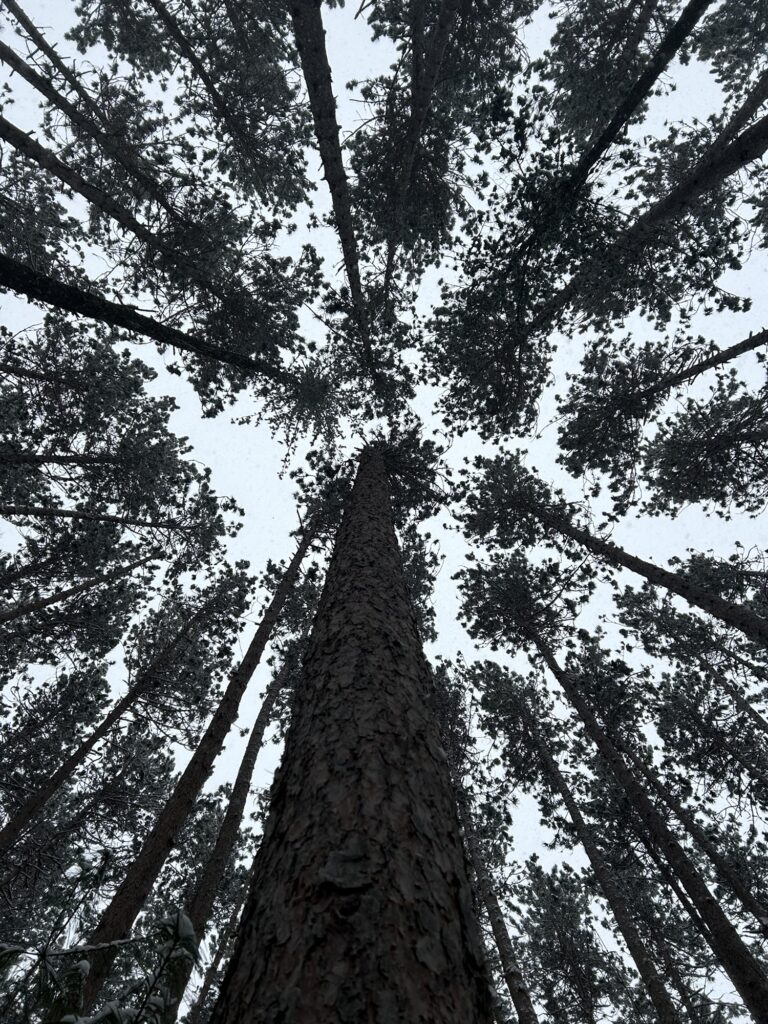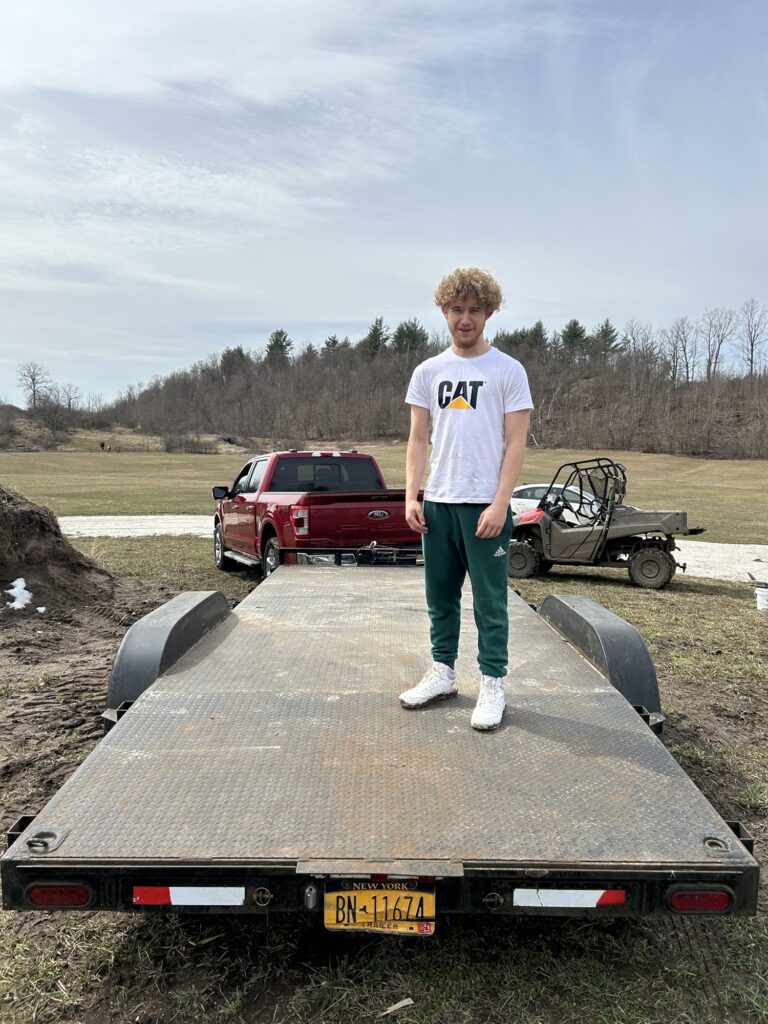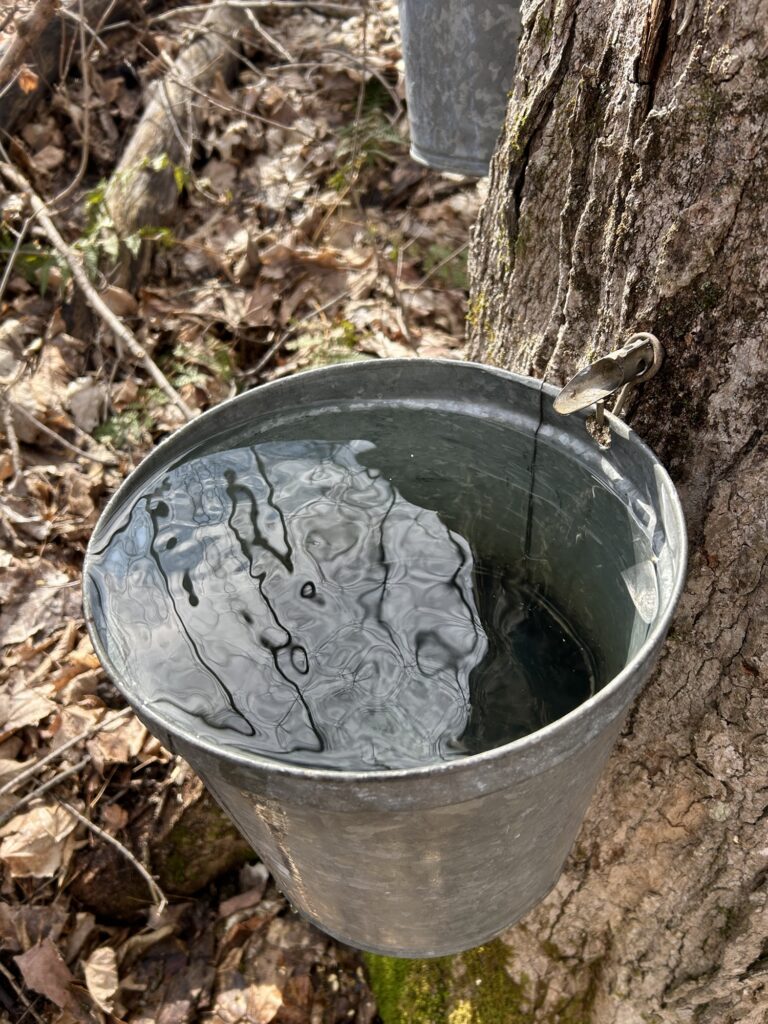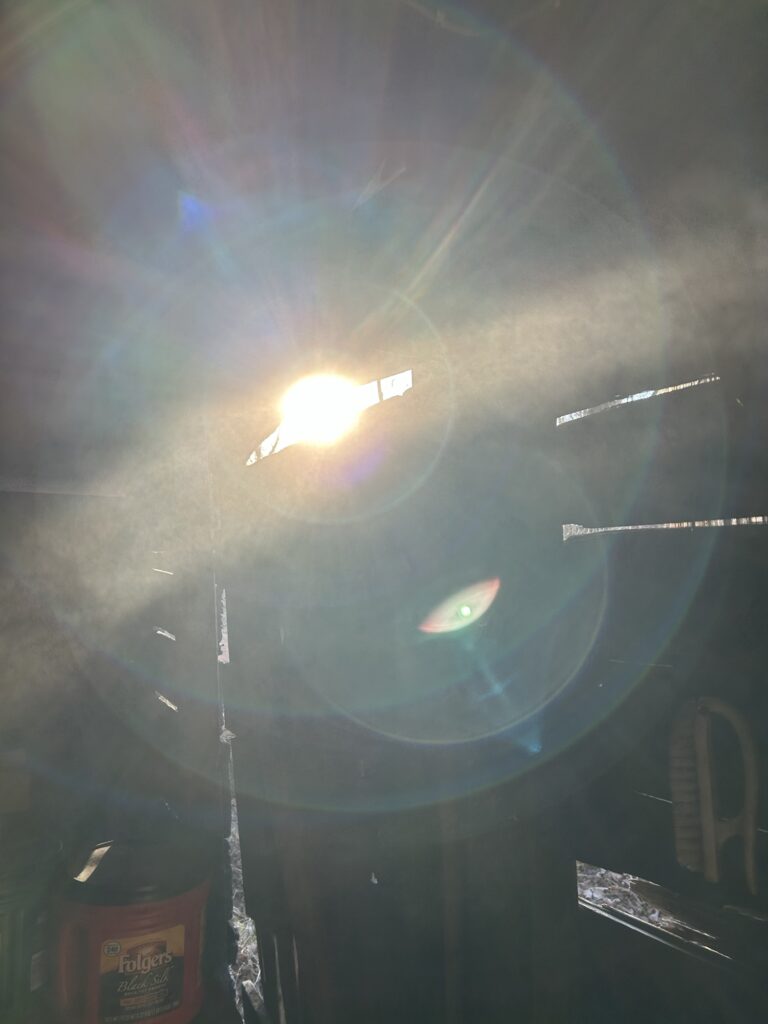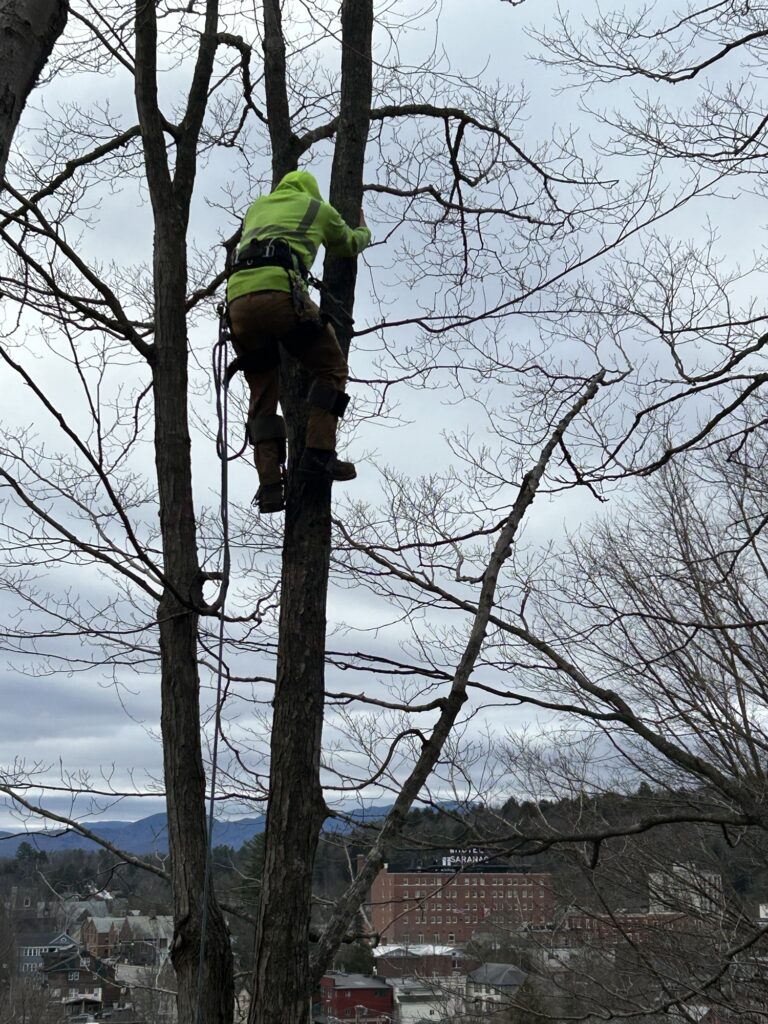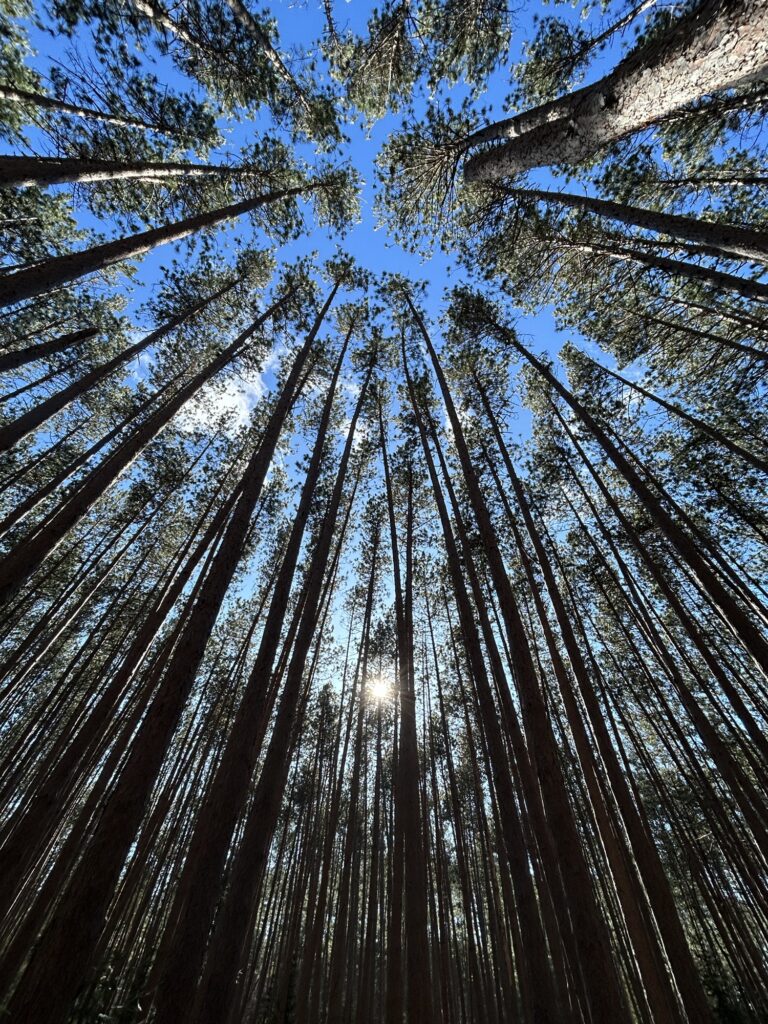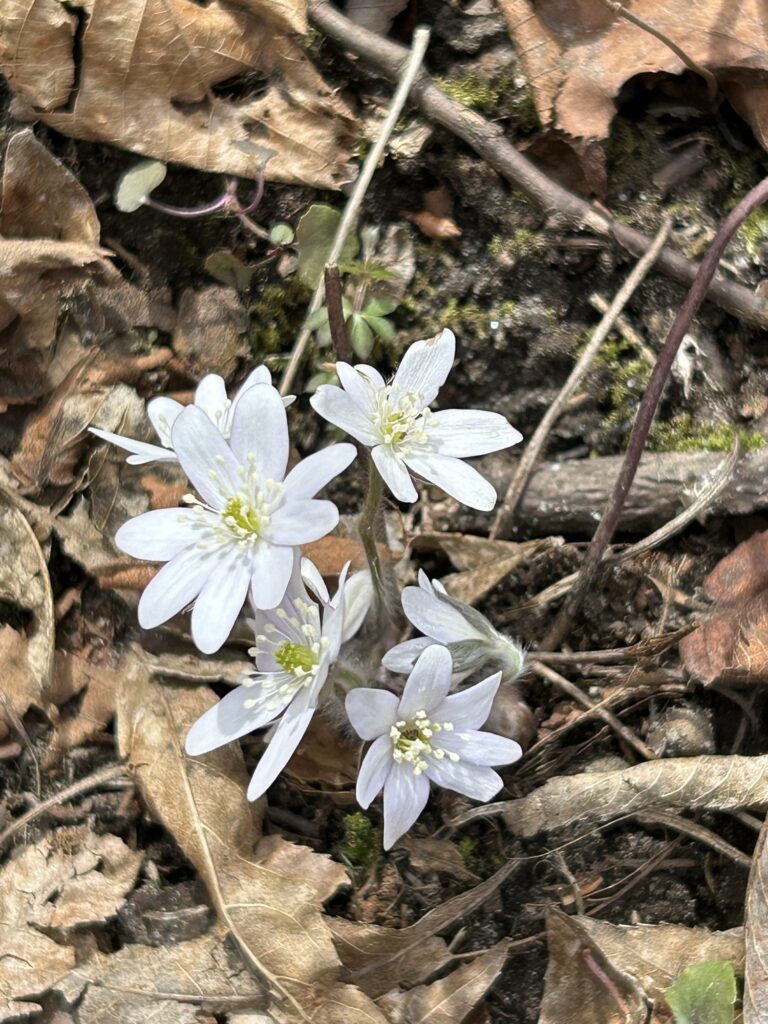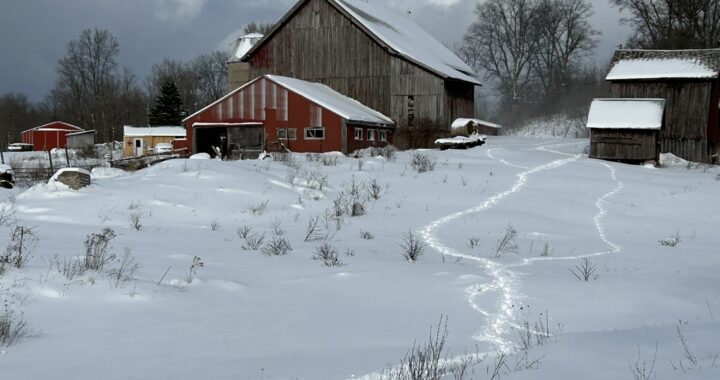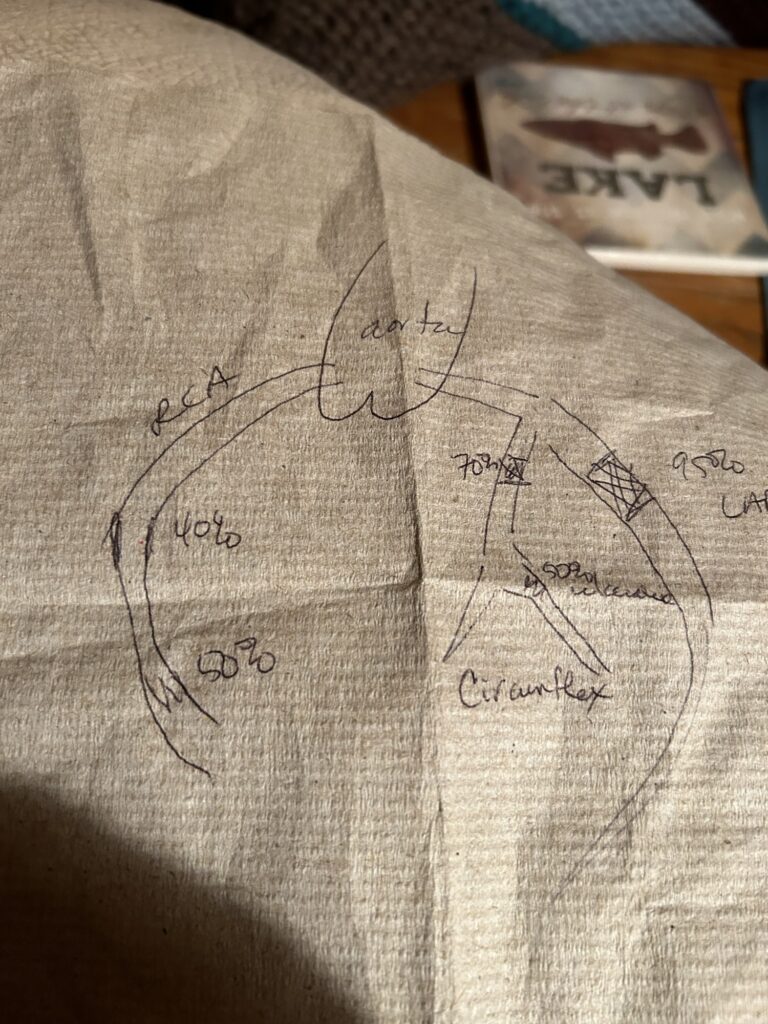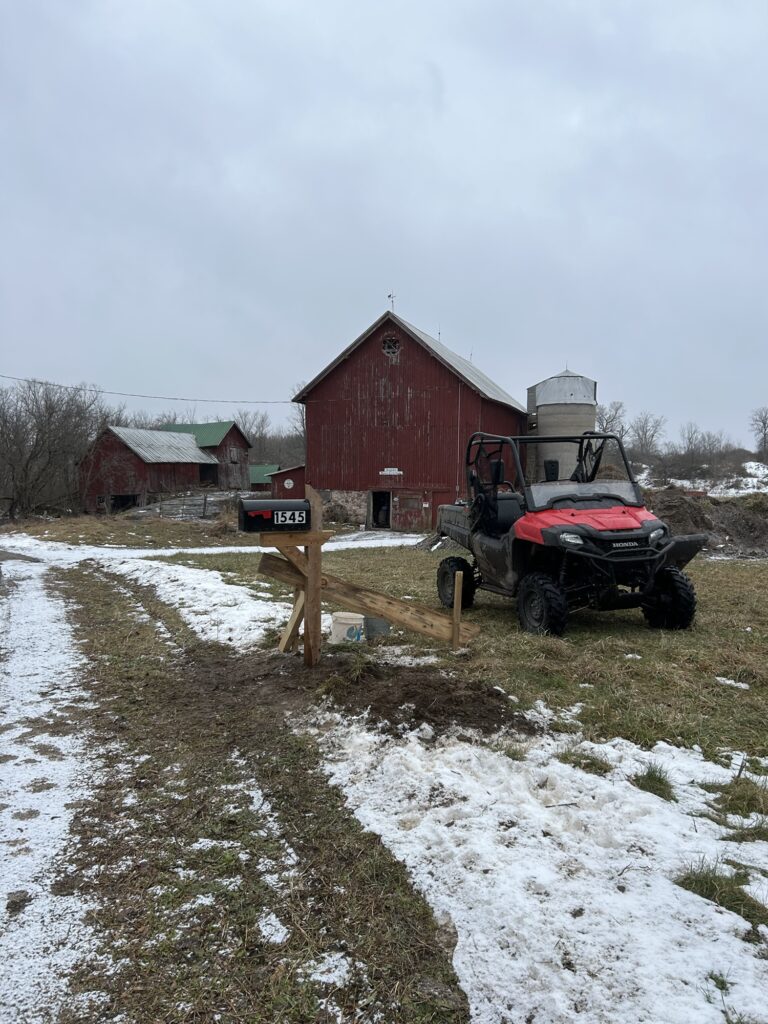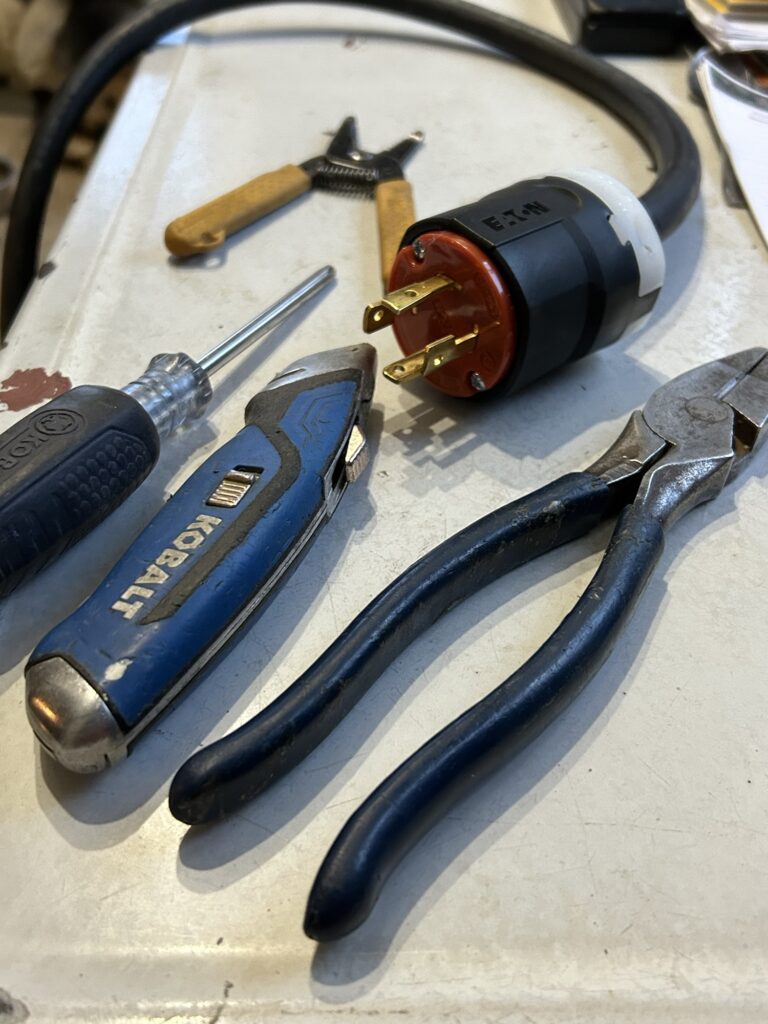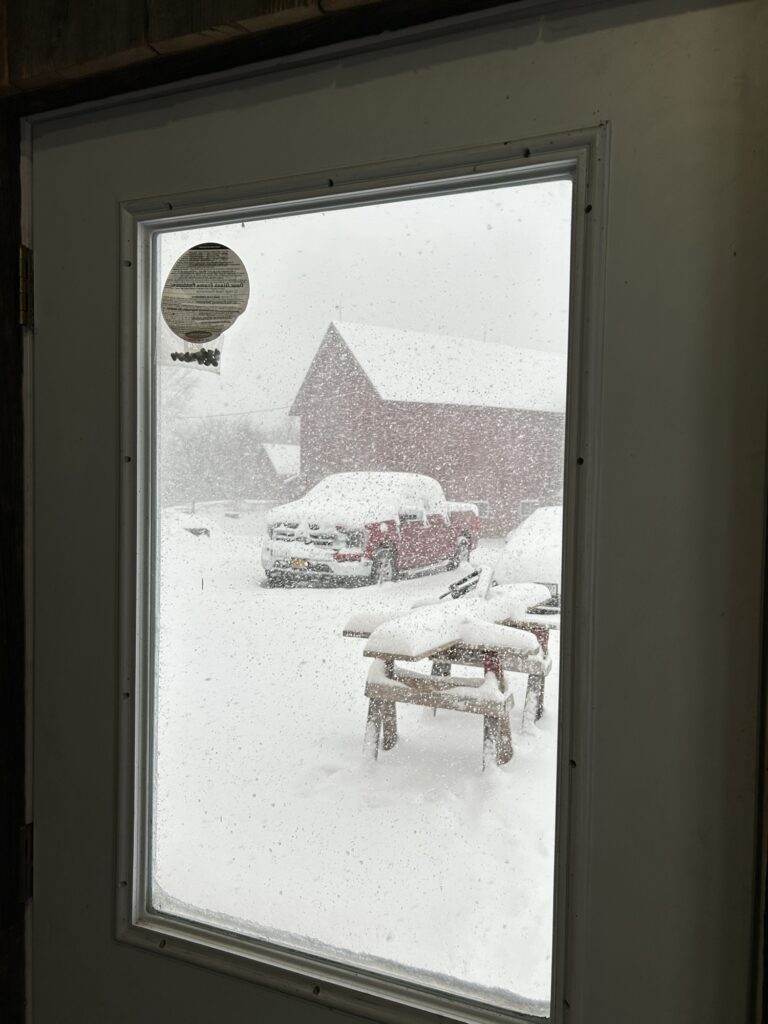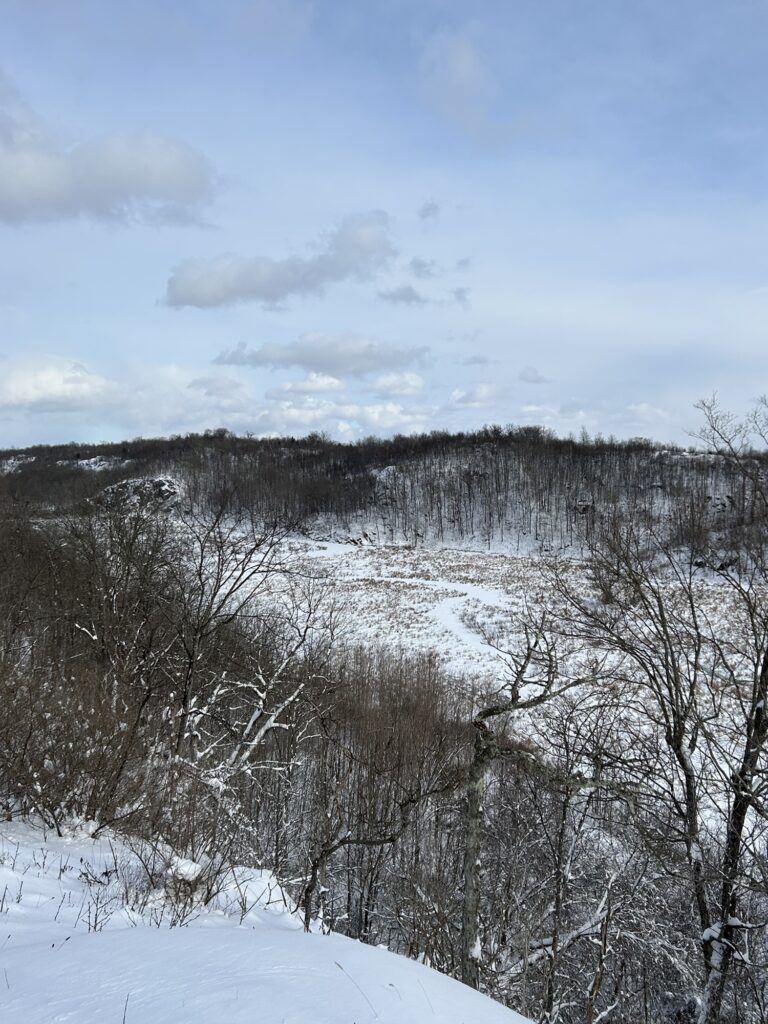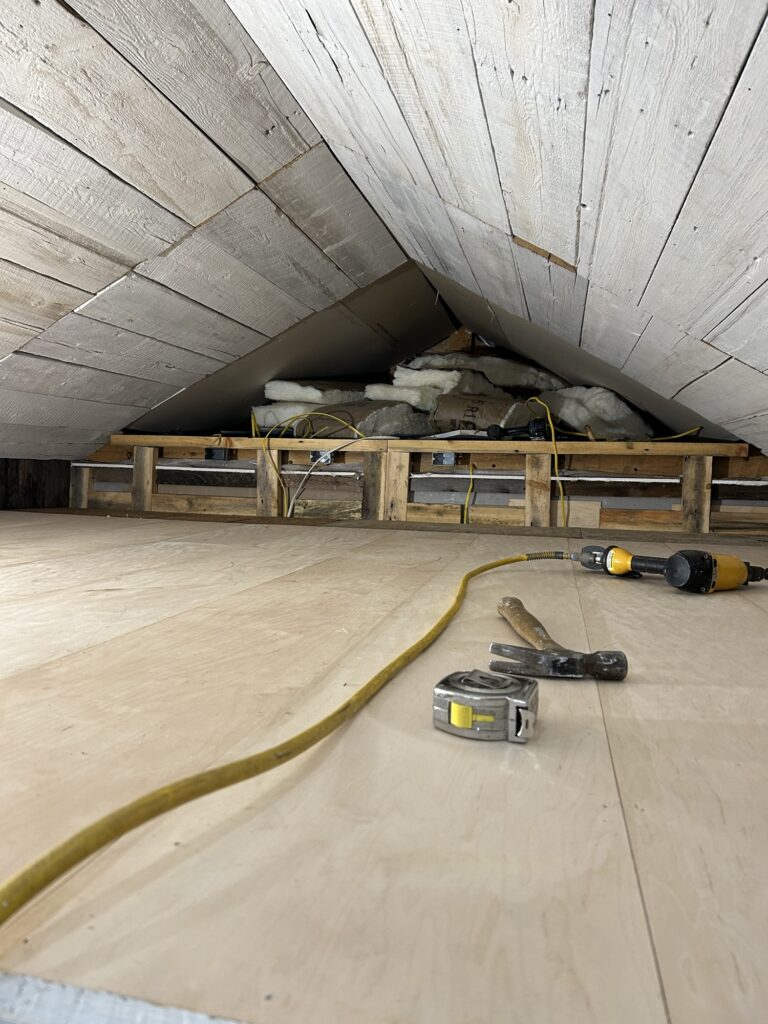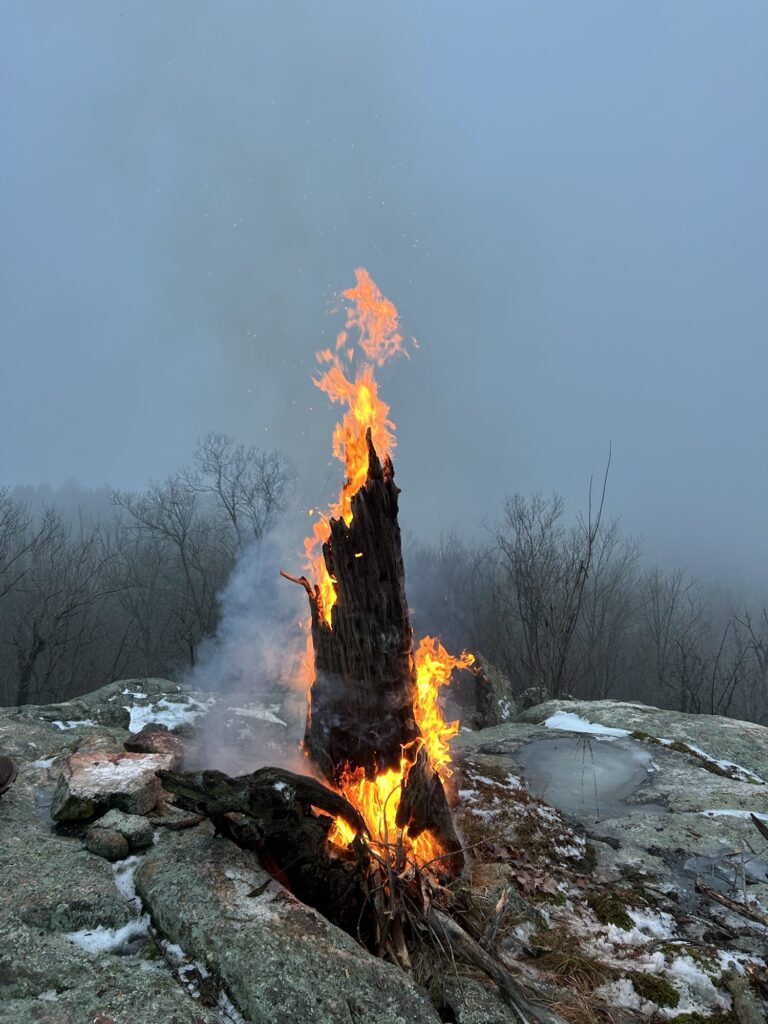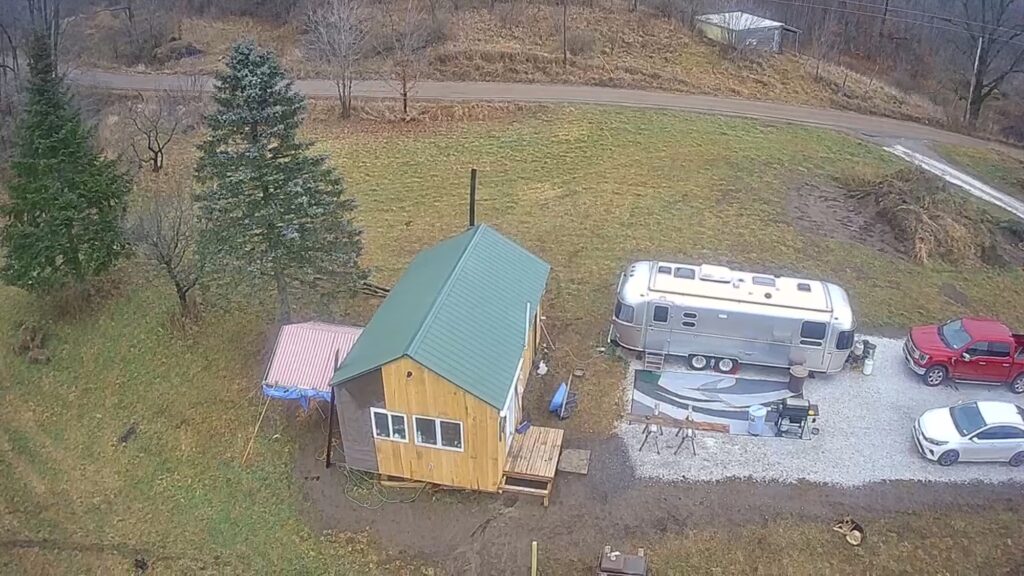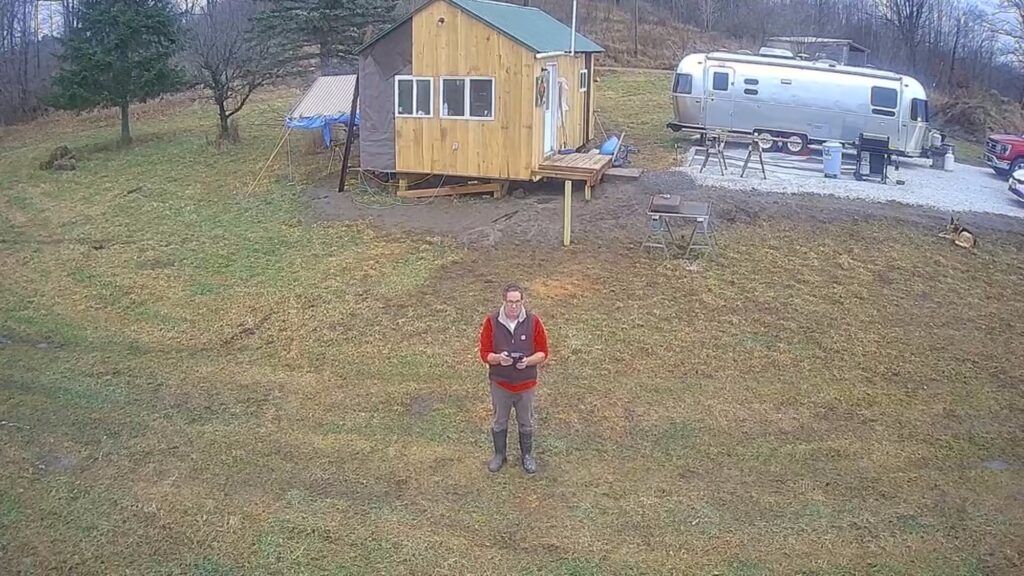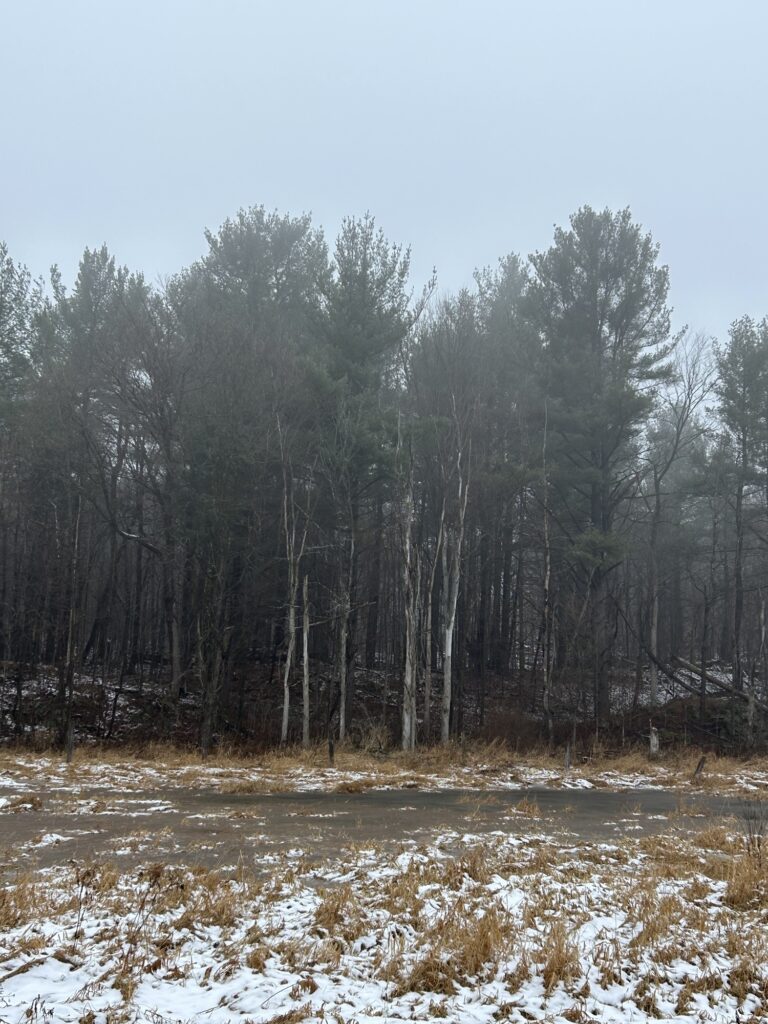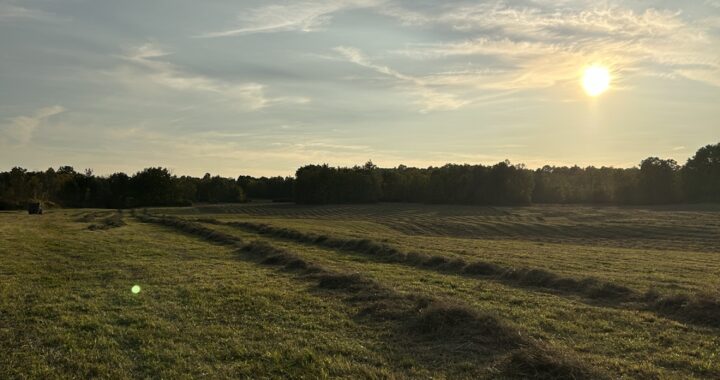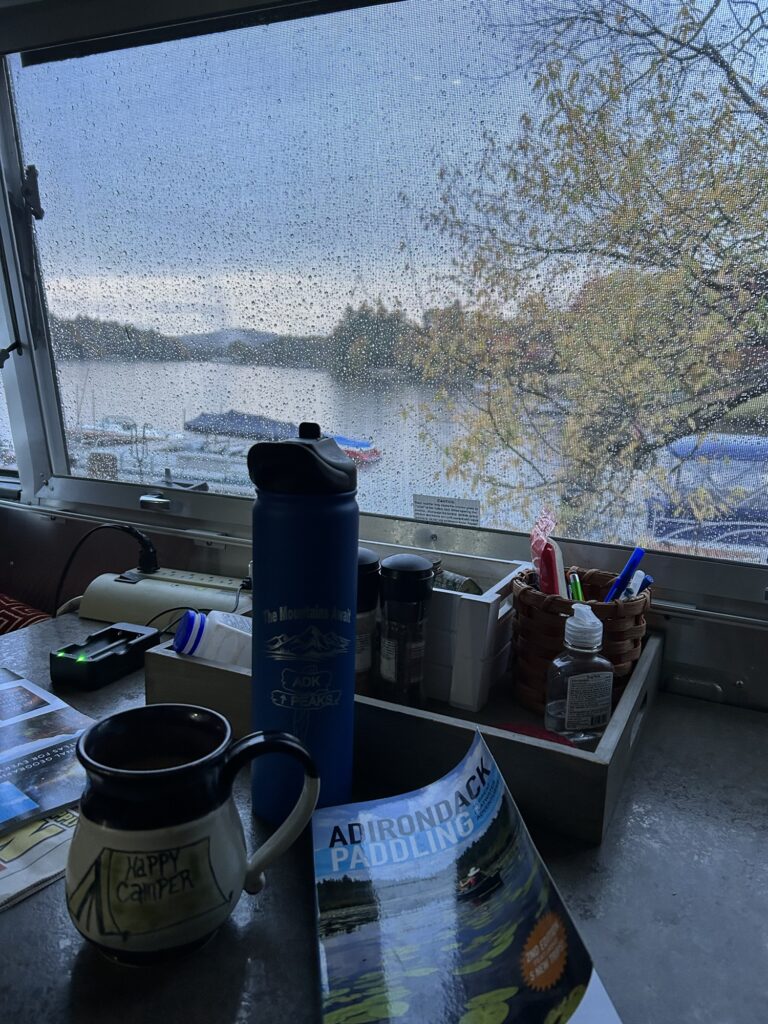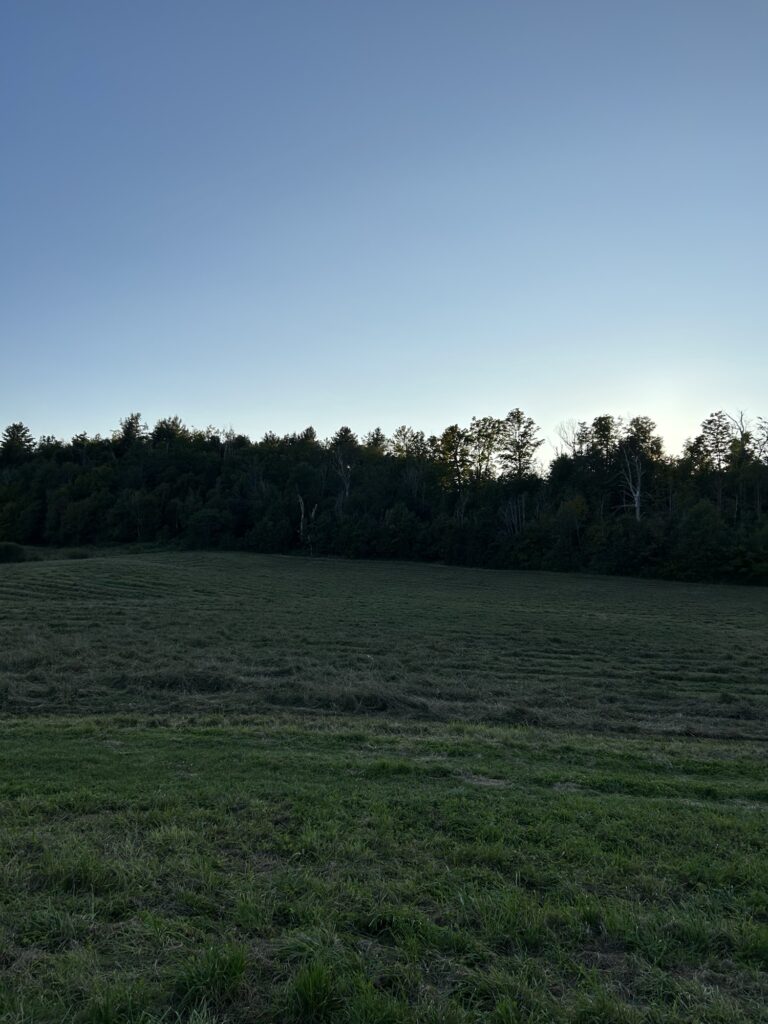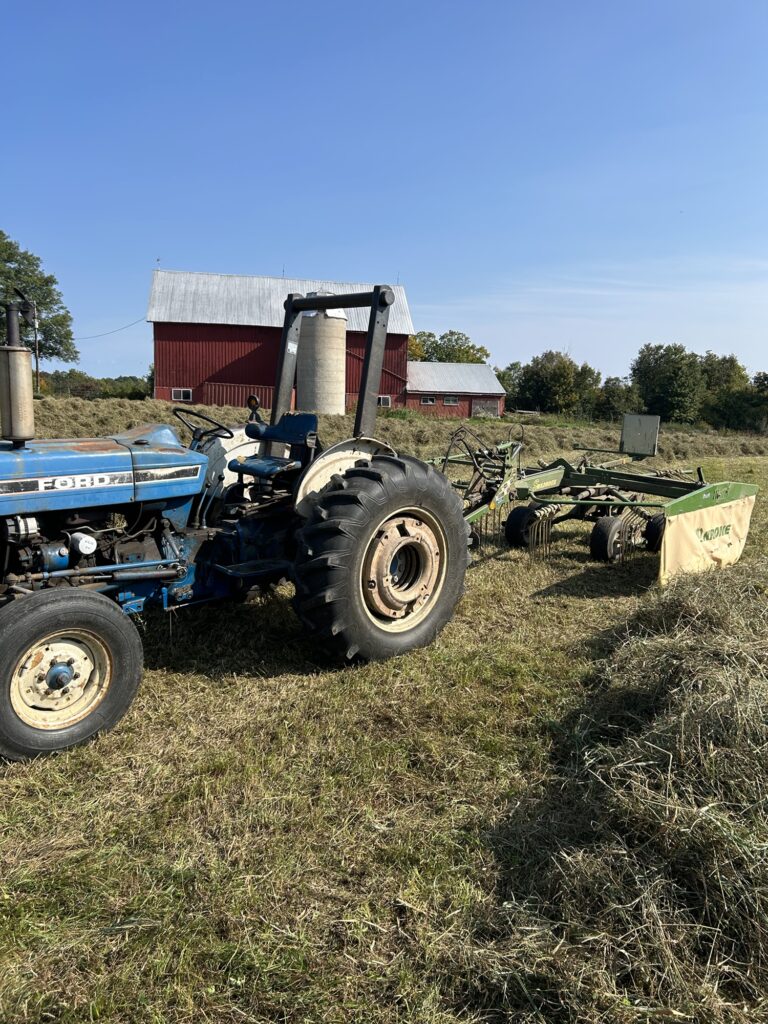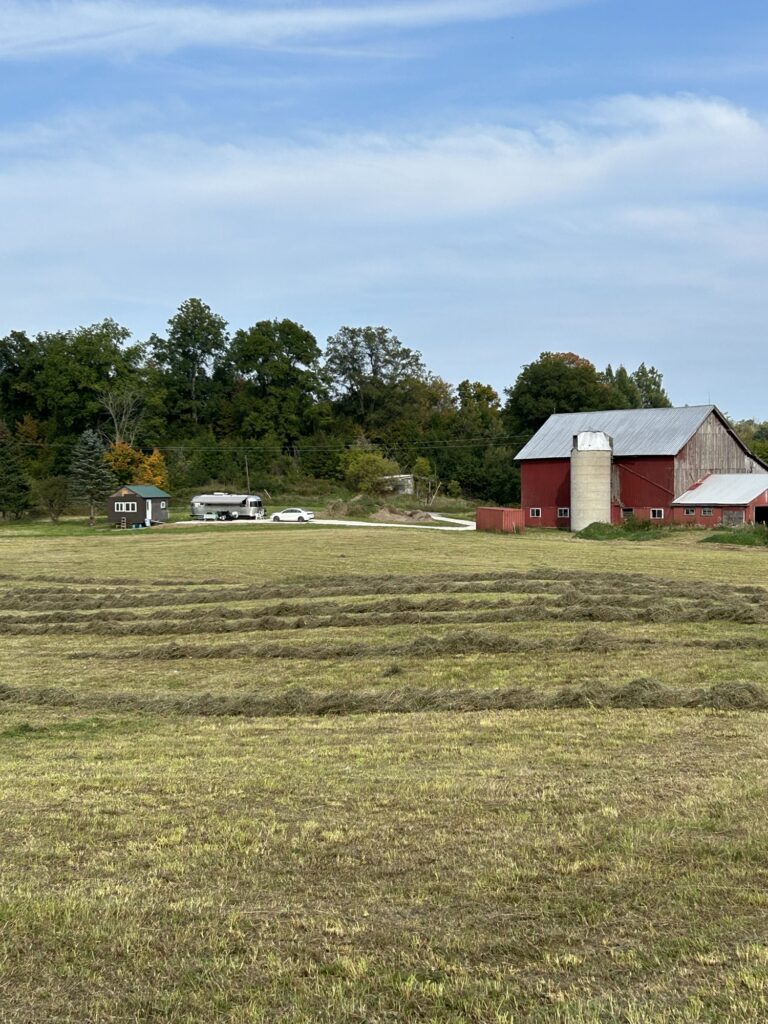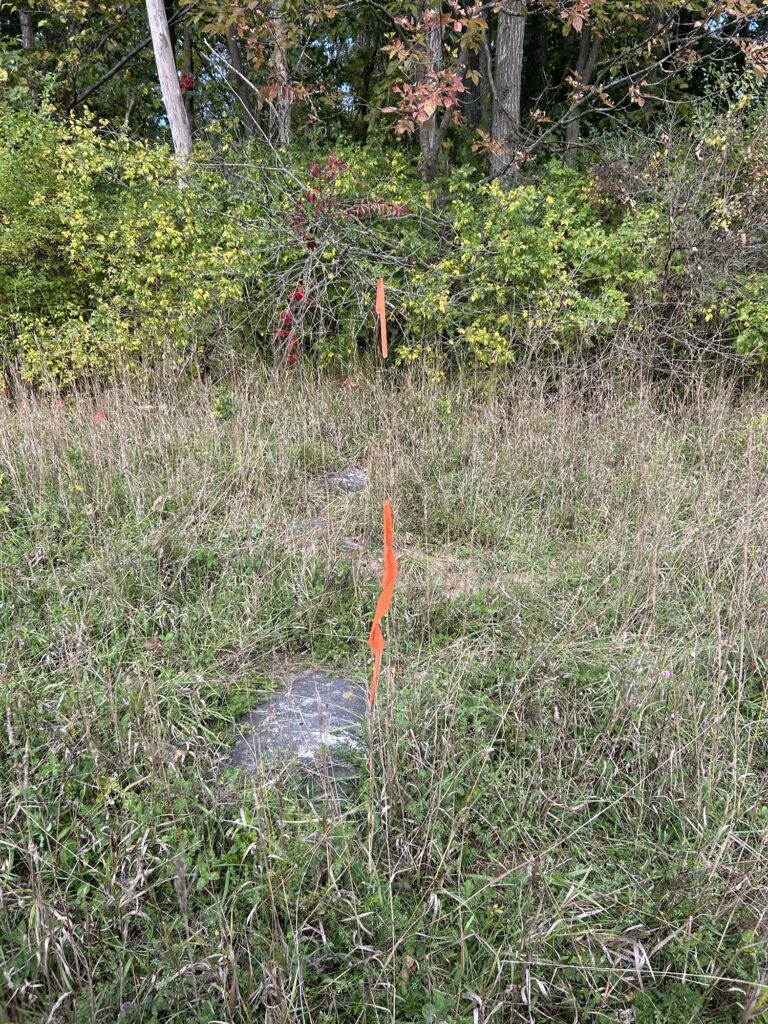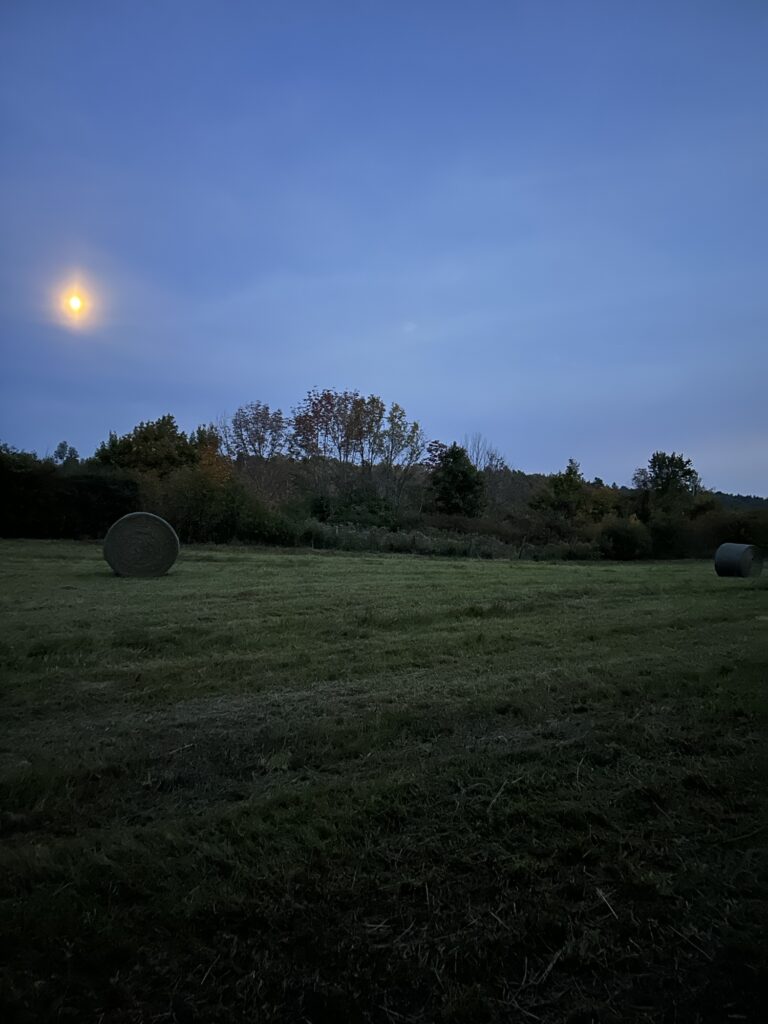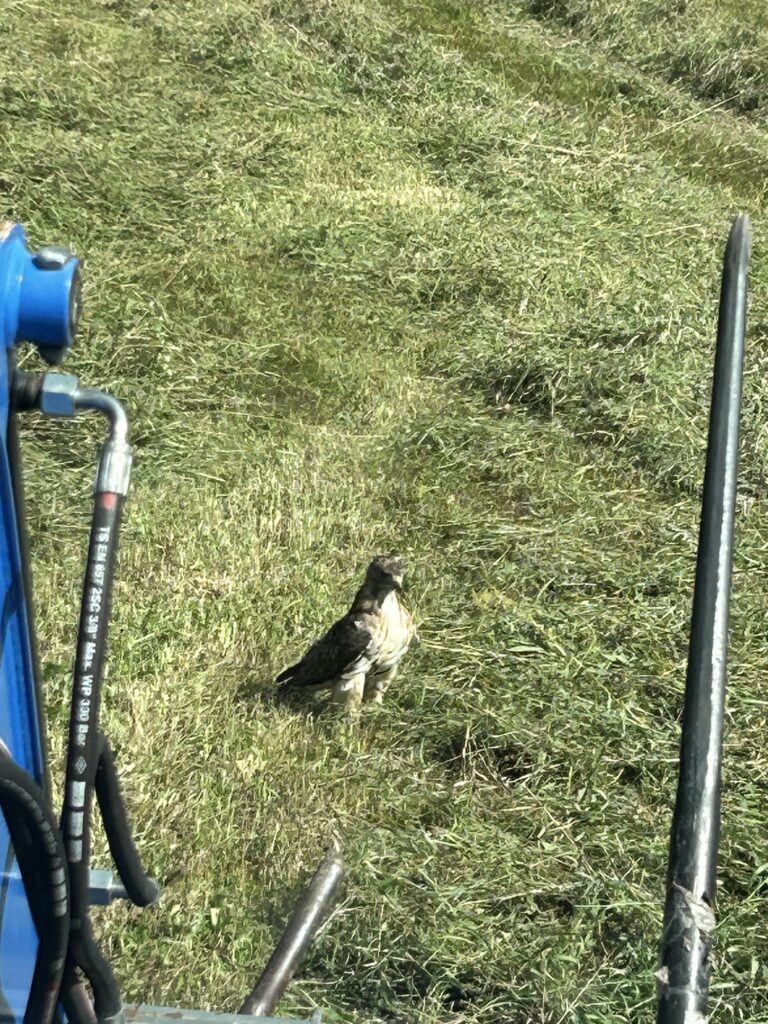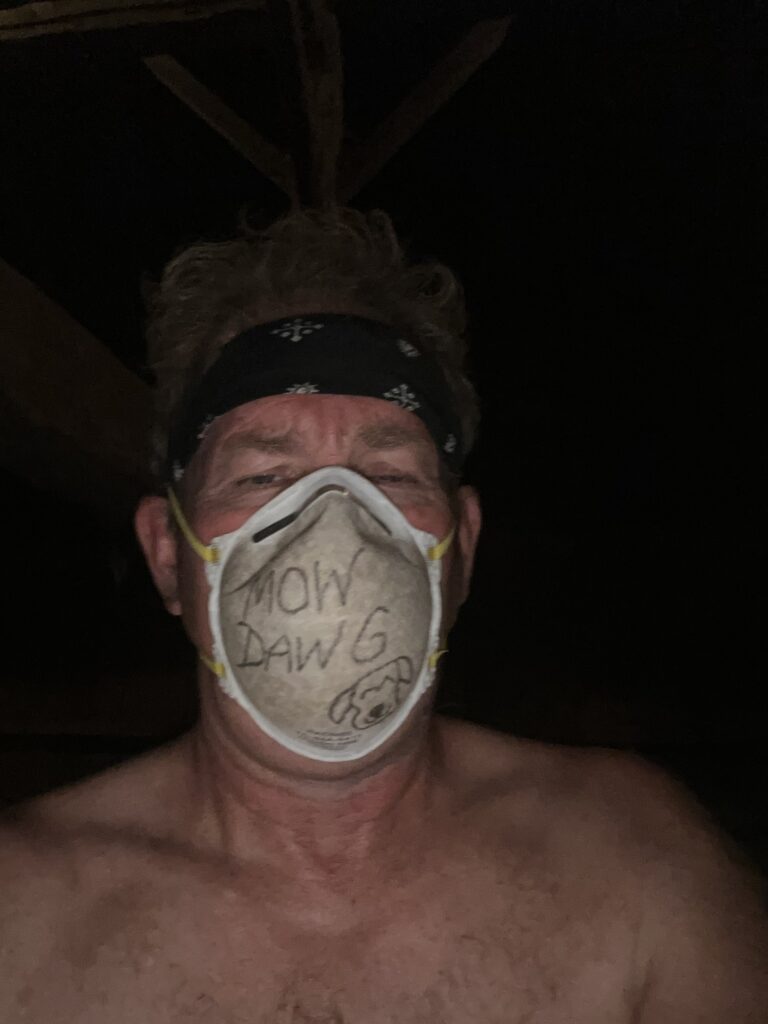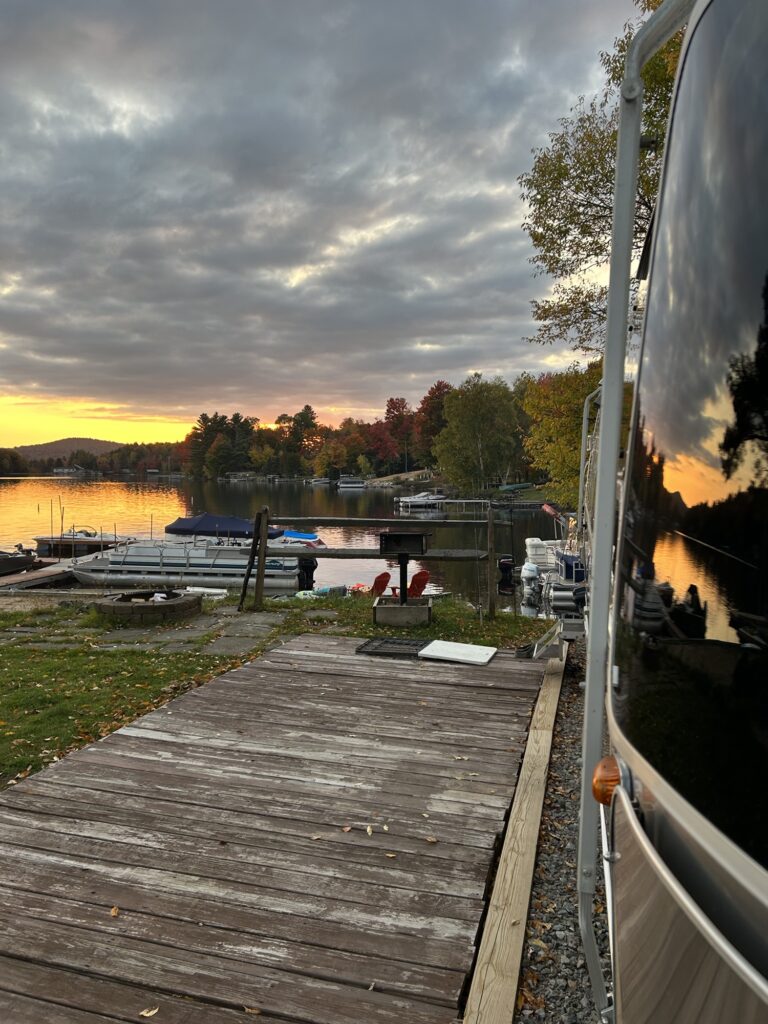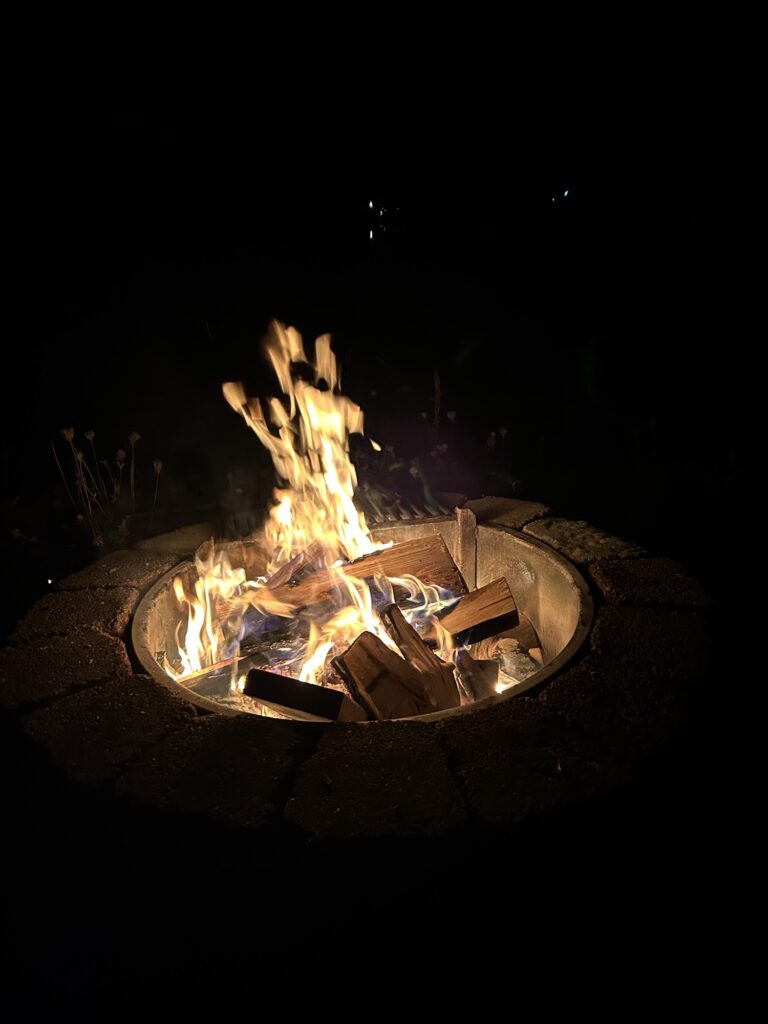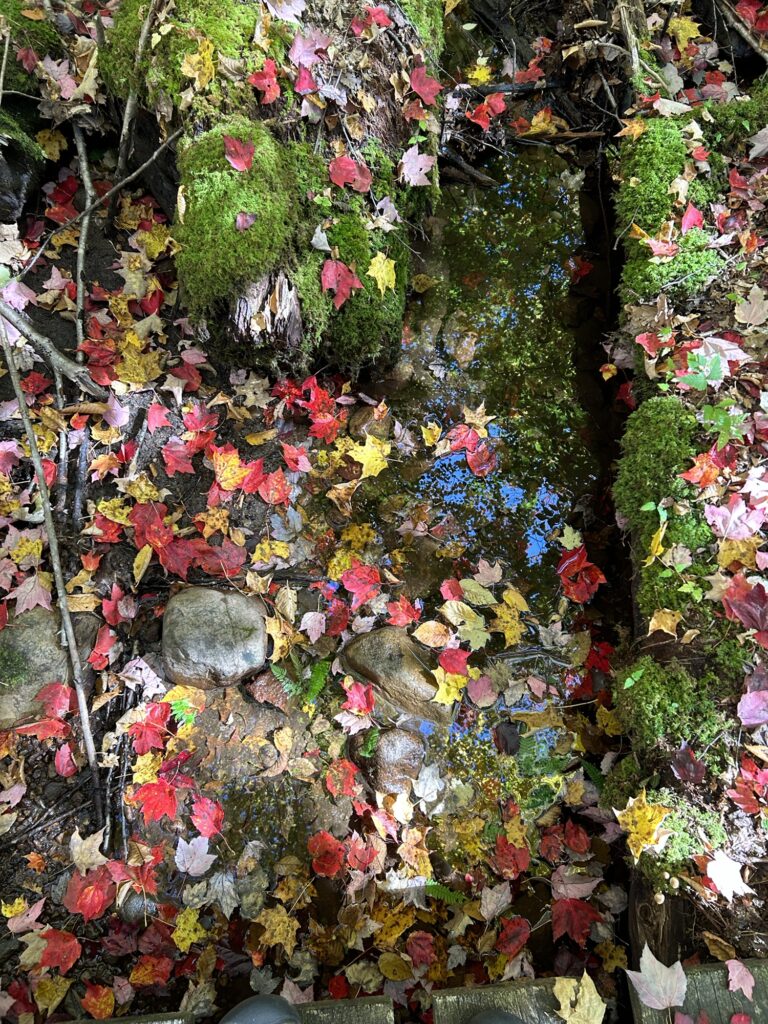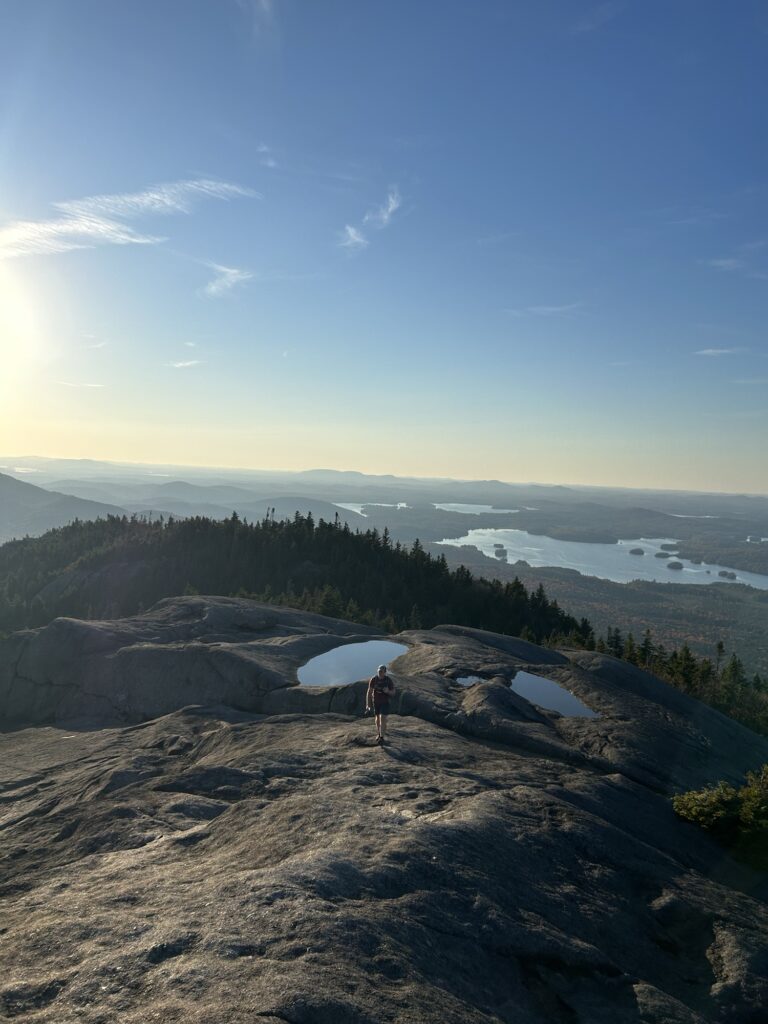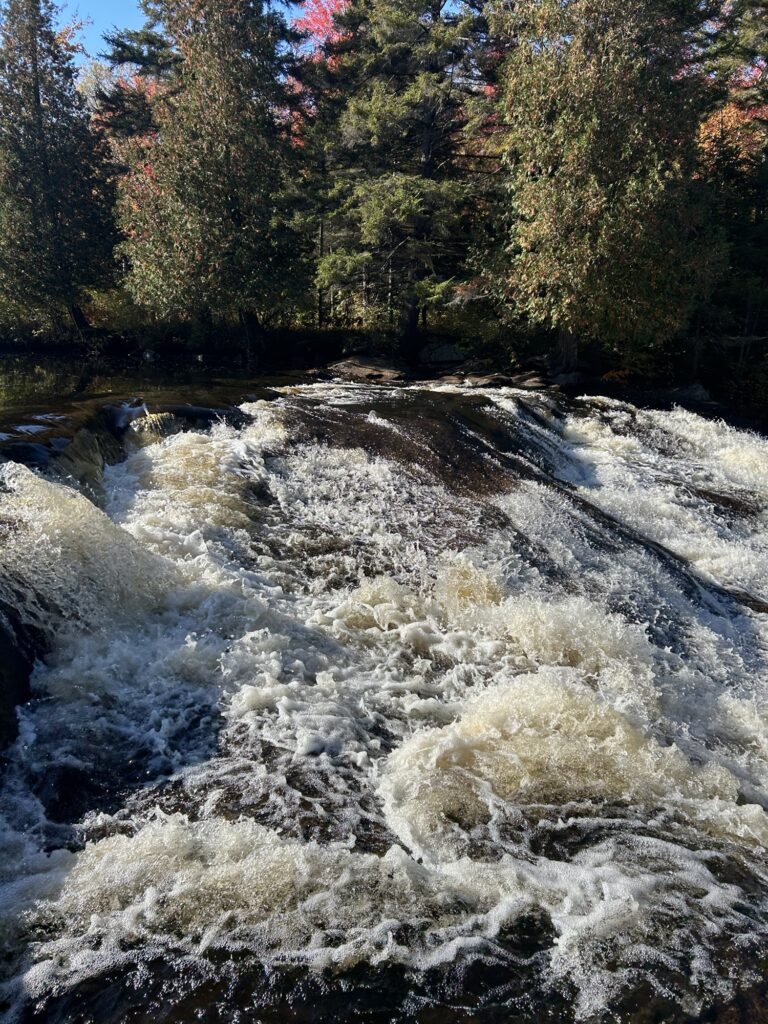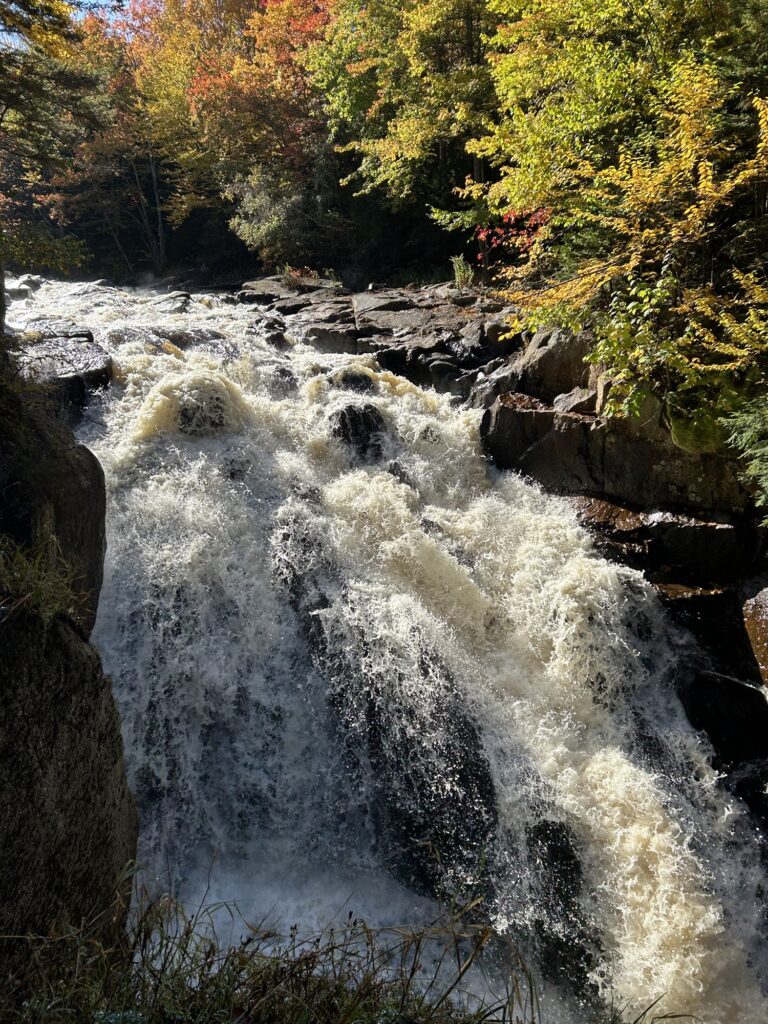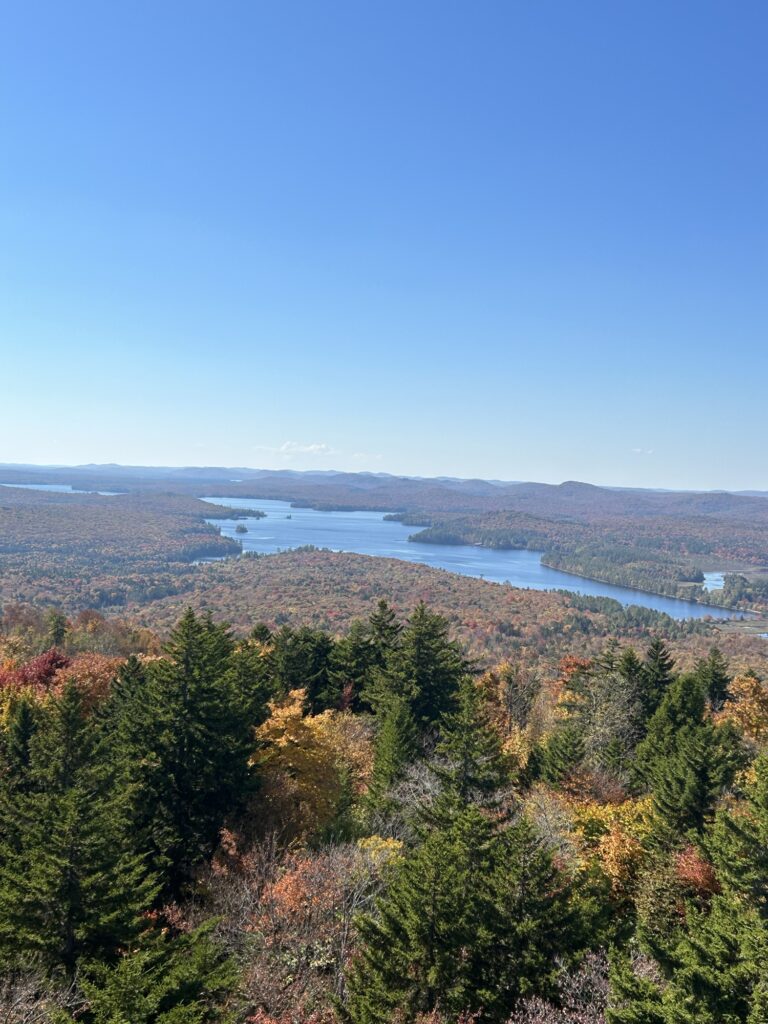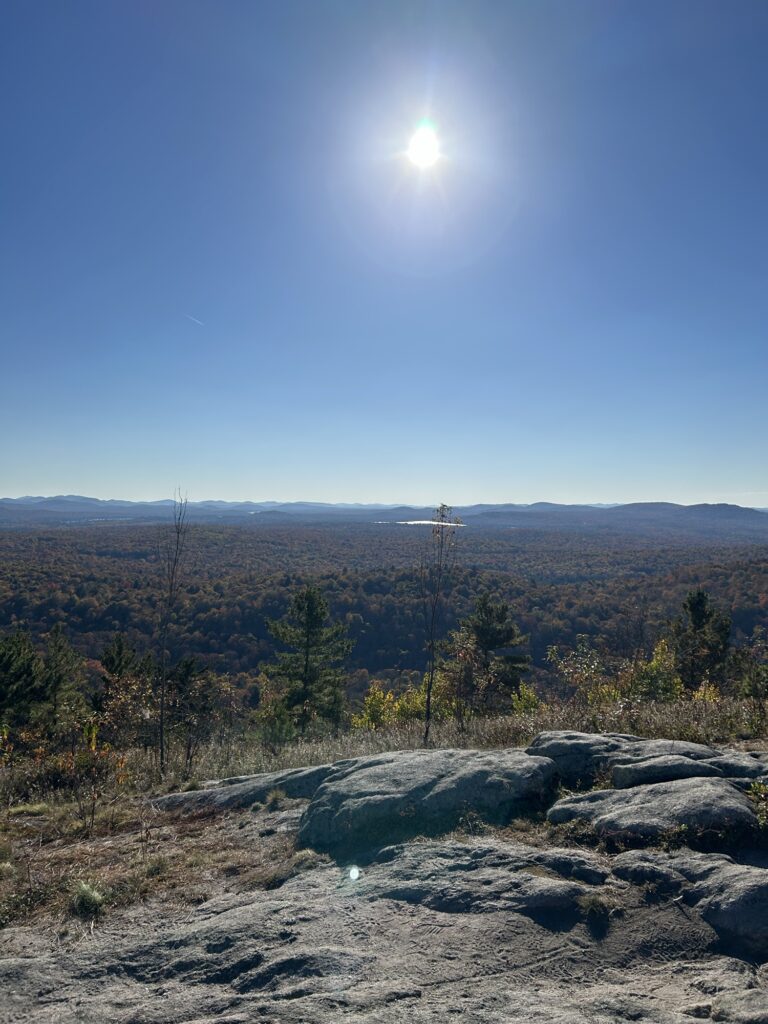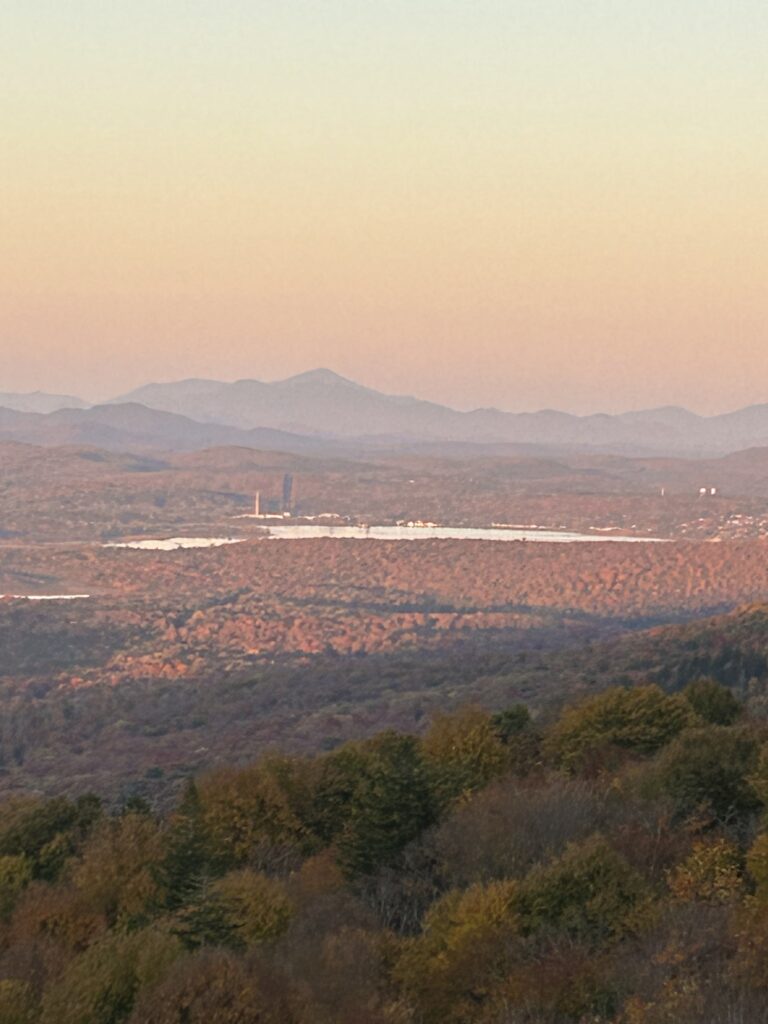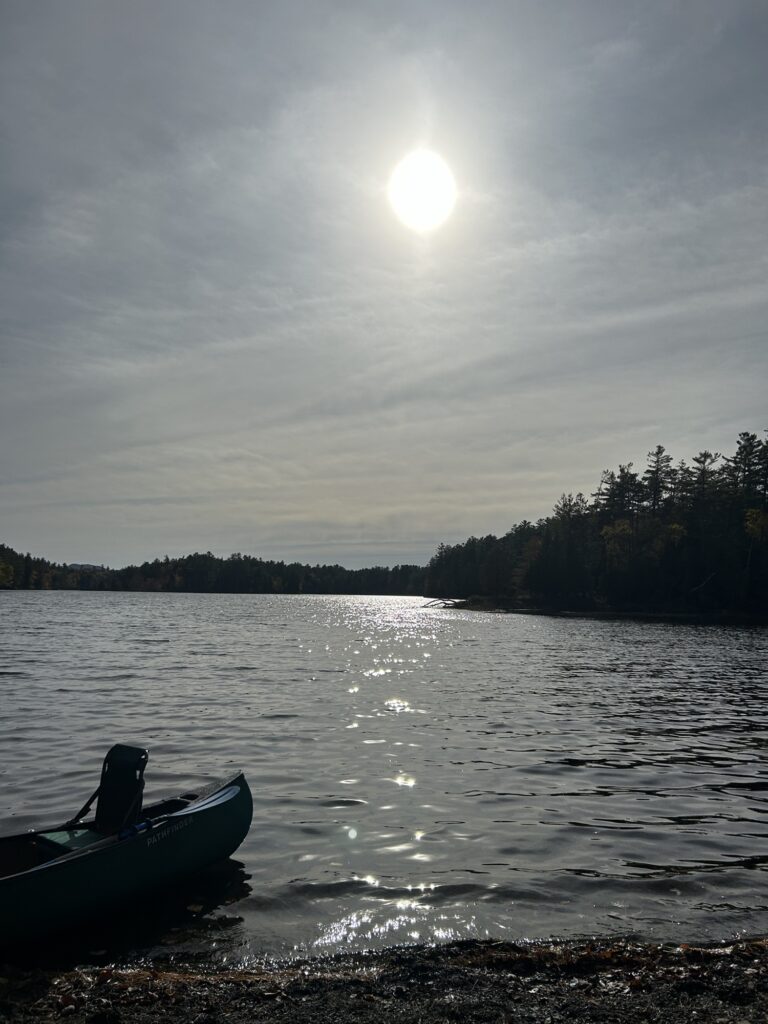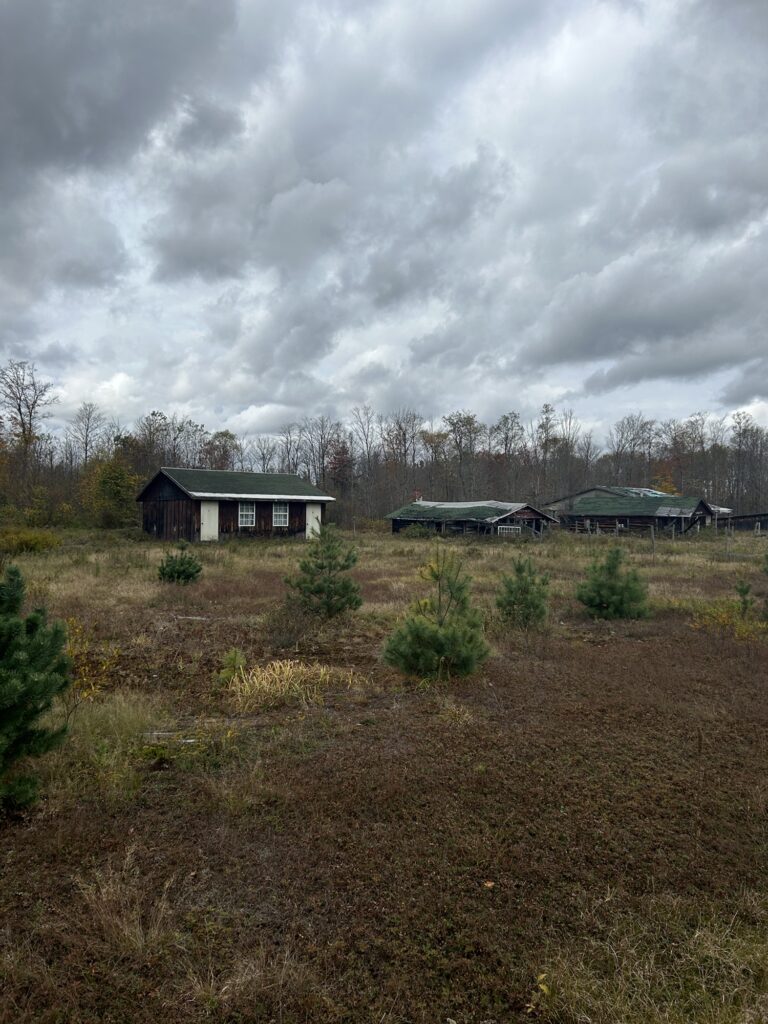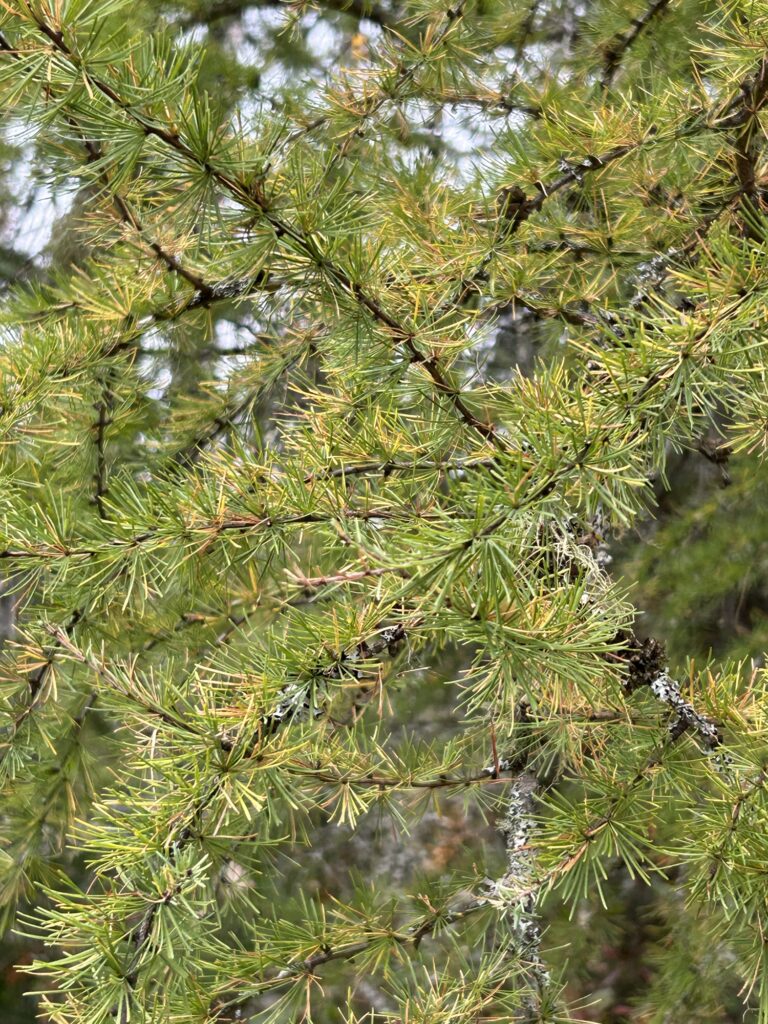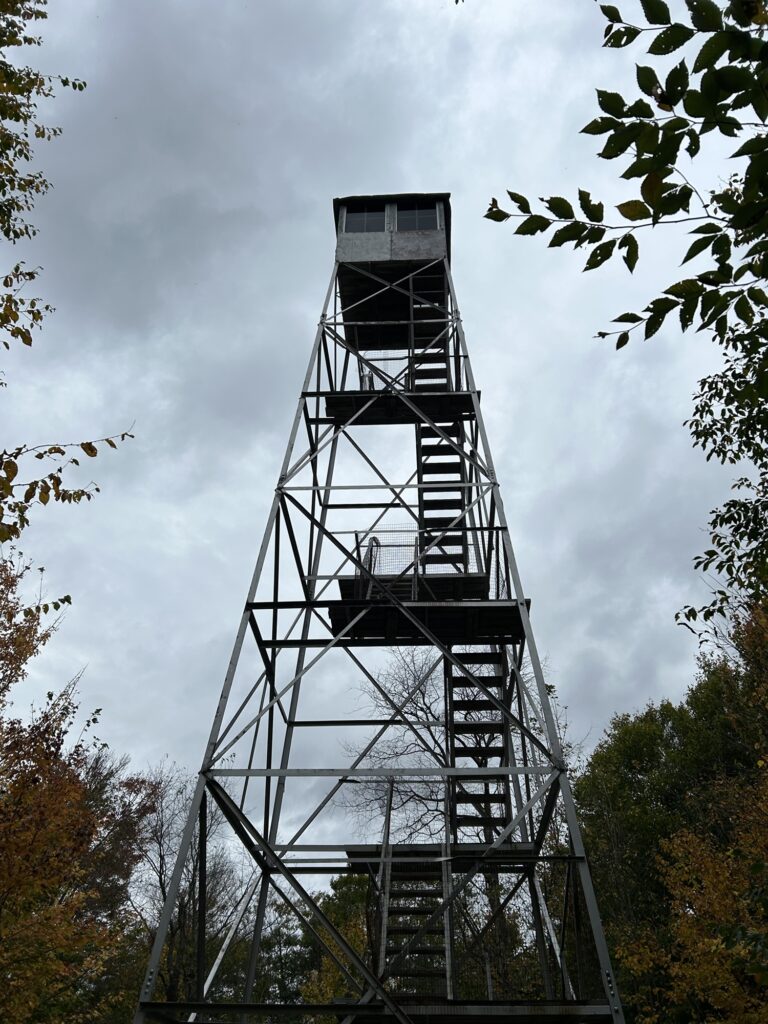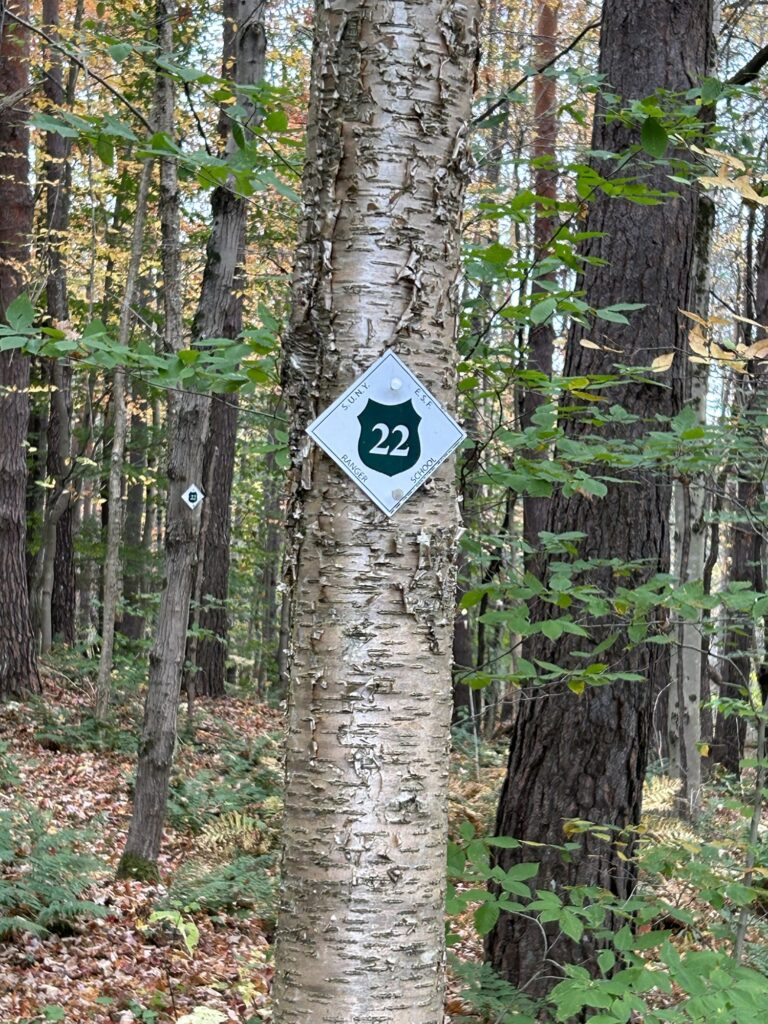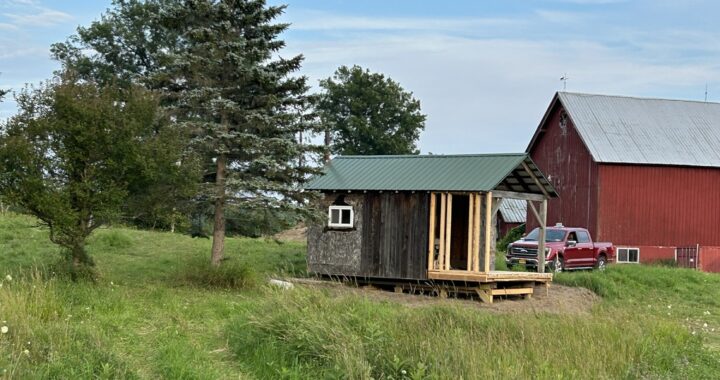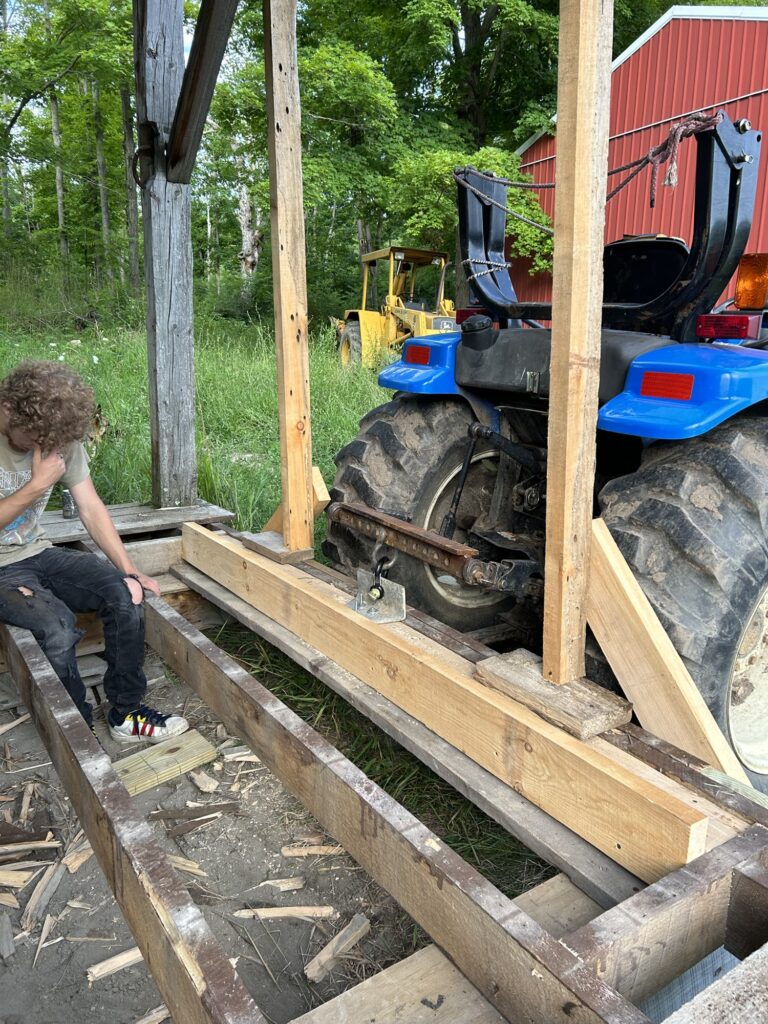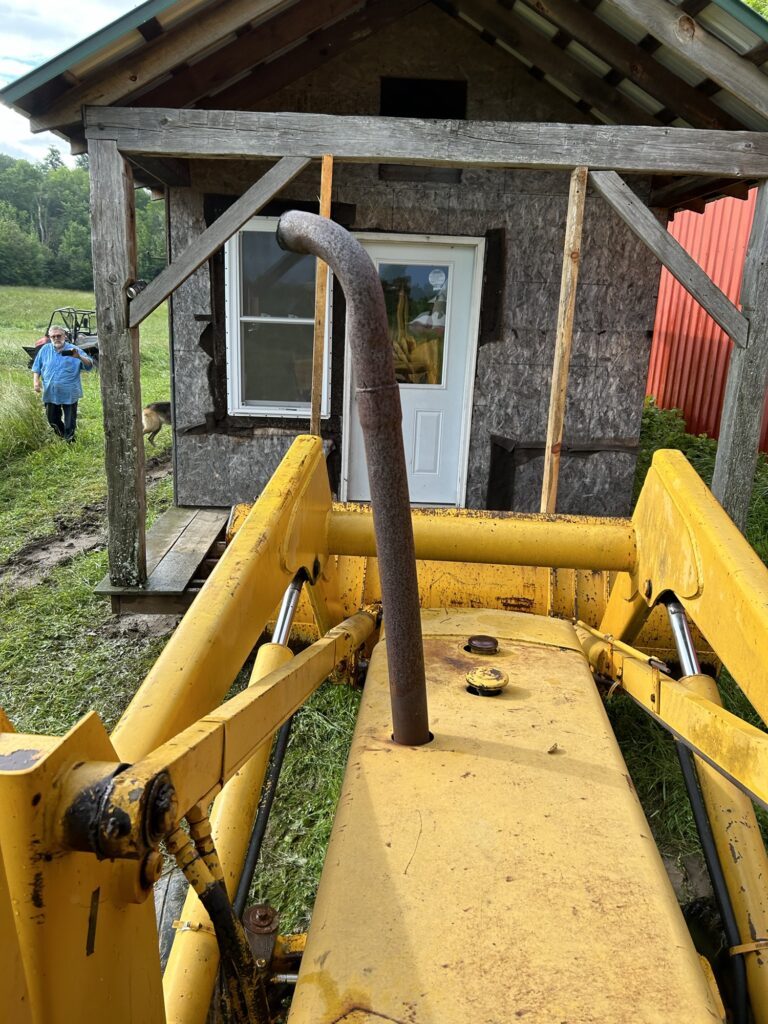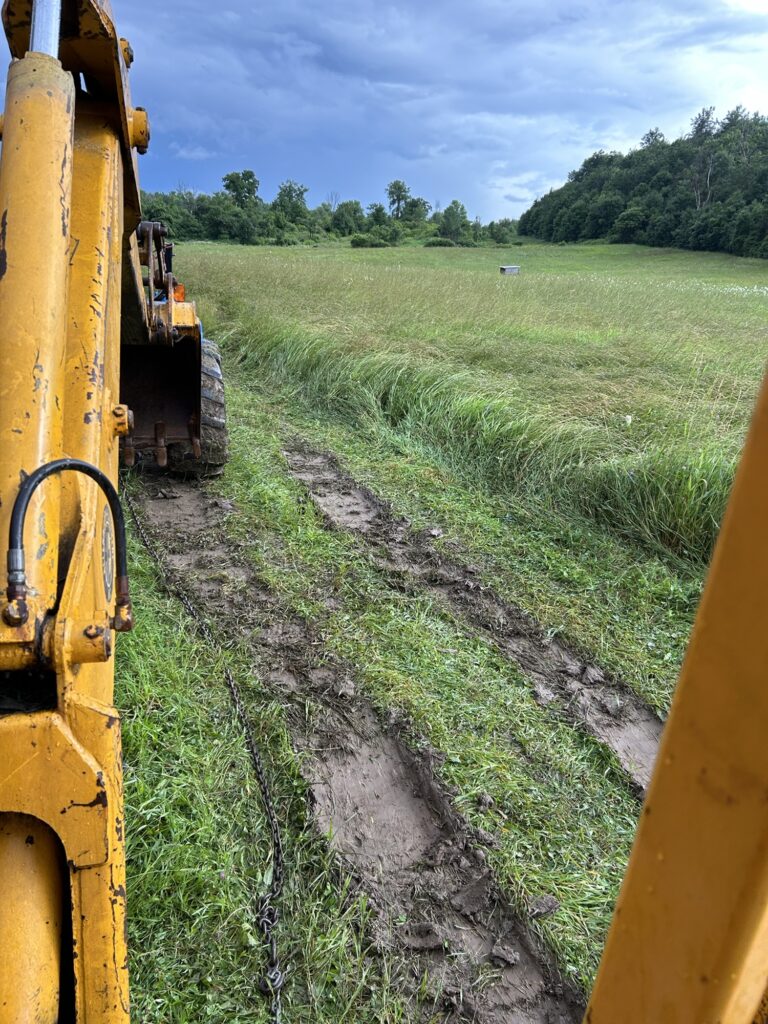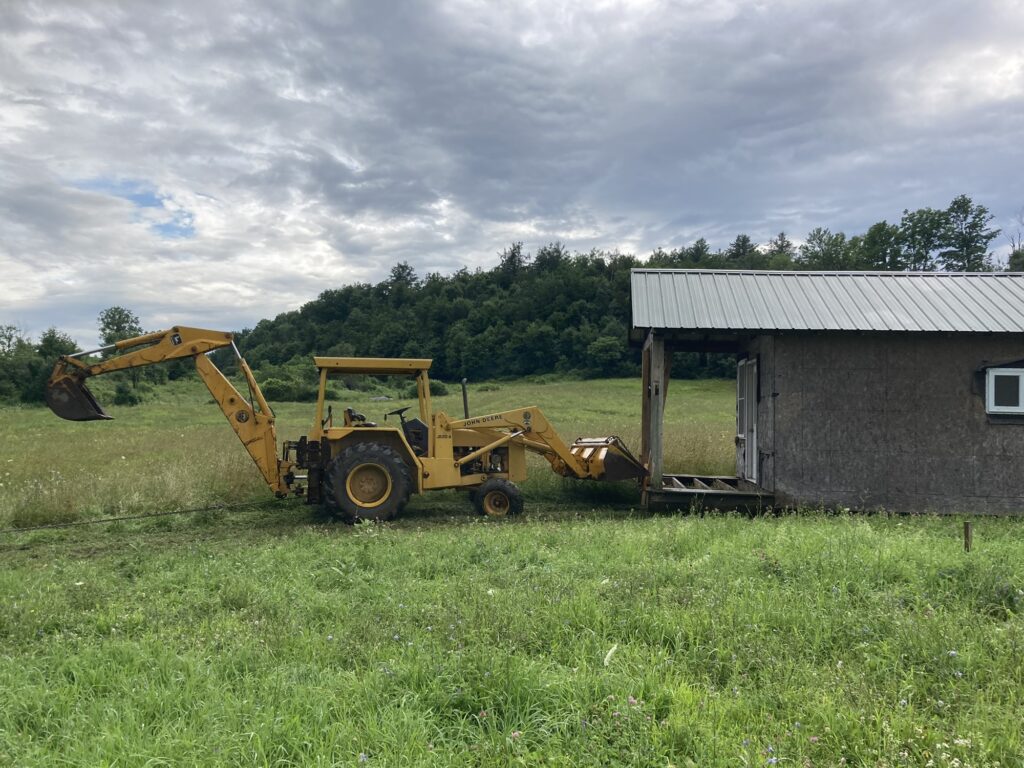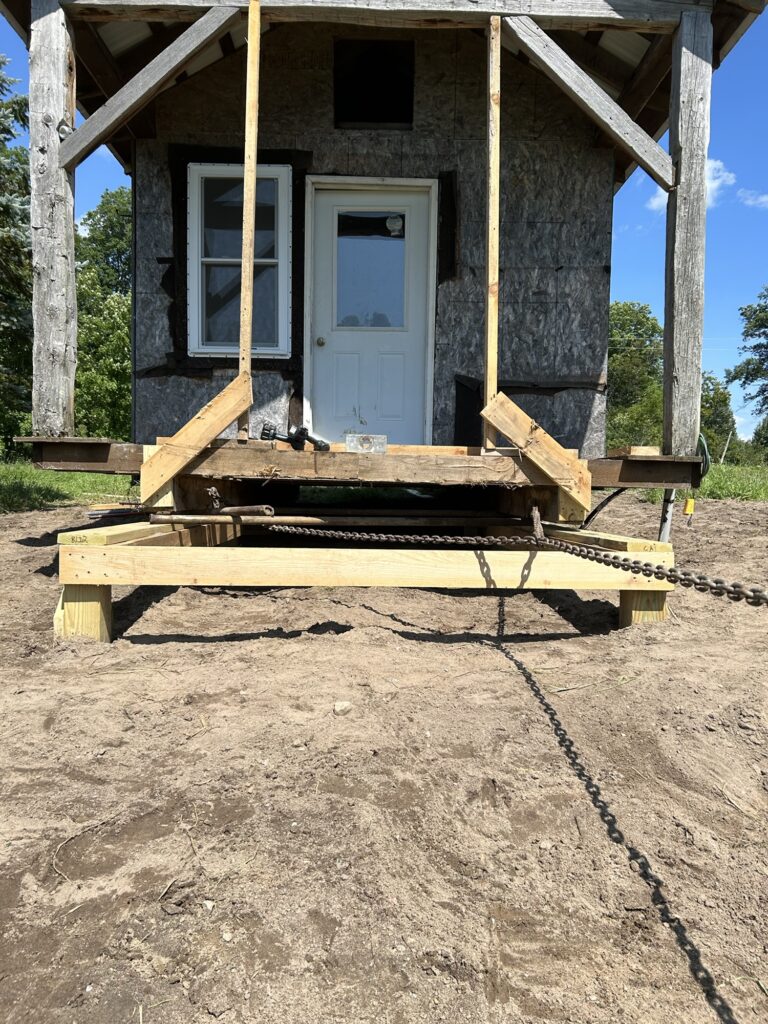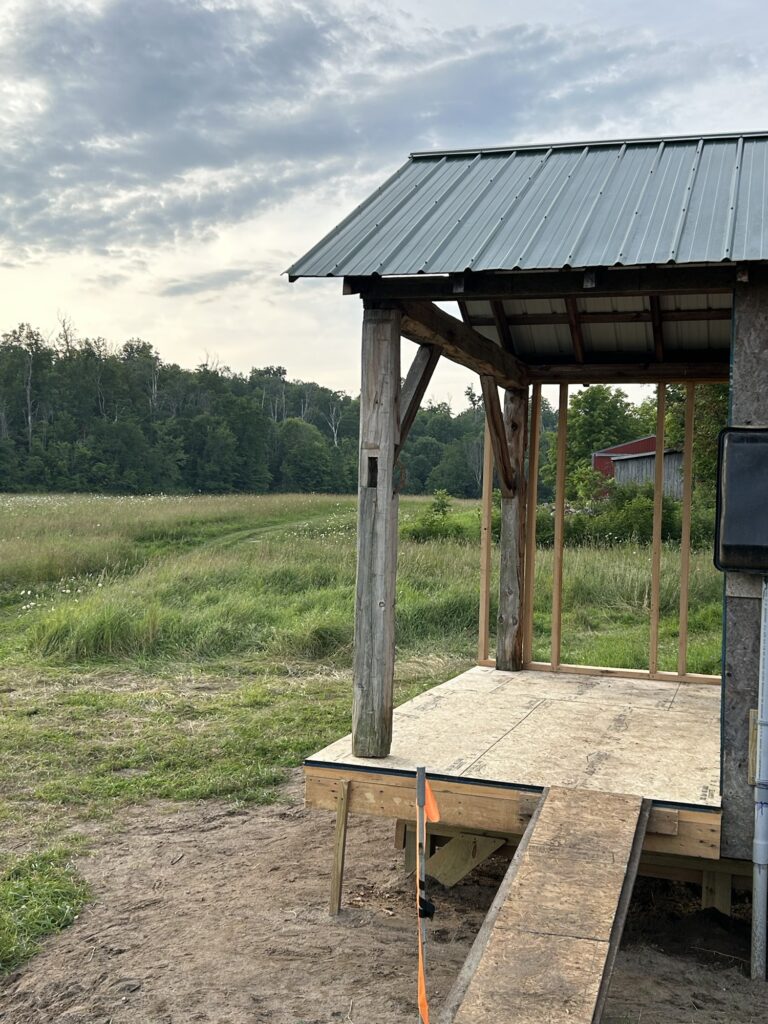July 9th has arrived hot and humid. Enter the days of work shorts and cutoff ratty tee shirts for me. The jackets and hoodies stashed for the time being but never too far from reach. The big news is our return to Camp Edith for some full time living again. Amy and I had done some work in the past few weeks cleaning and organizing the rather cluttered inside of the cottage ahead of a planned July 4th long weekend.Our hard work payed off!When the weather came in hot and calm we were well positioned to have a fun and relaxing time!We did continue to work on some miscellaneous interior organizing efforts however to enhance our small but cozy living space. But it would be the state of the outdoor space that would set my mind wandering and searching for answers to something that was haunting the recesses of my mind. What drives me so? Why the rollercoaster ride of emotion that has taken me so high then so low these past 6 months? And I have experienced every curve and twist in between those destinations along the way. The answer had come suddenly in a moment of perfect clarity. I had discovered the true meaning of the word acquiesce. As in reluctant acceptance of something without protest. But what had I accepted? And had I not protested? There was an answer and a place to face the future in all of it.Was I ready though? The answer would not find me at the Homestead property as you might expect but rather at Camp Edith. It’s rather complicated but simple at the same time.
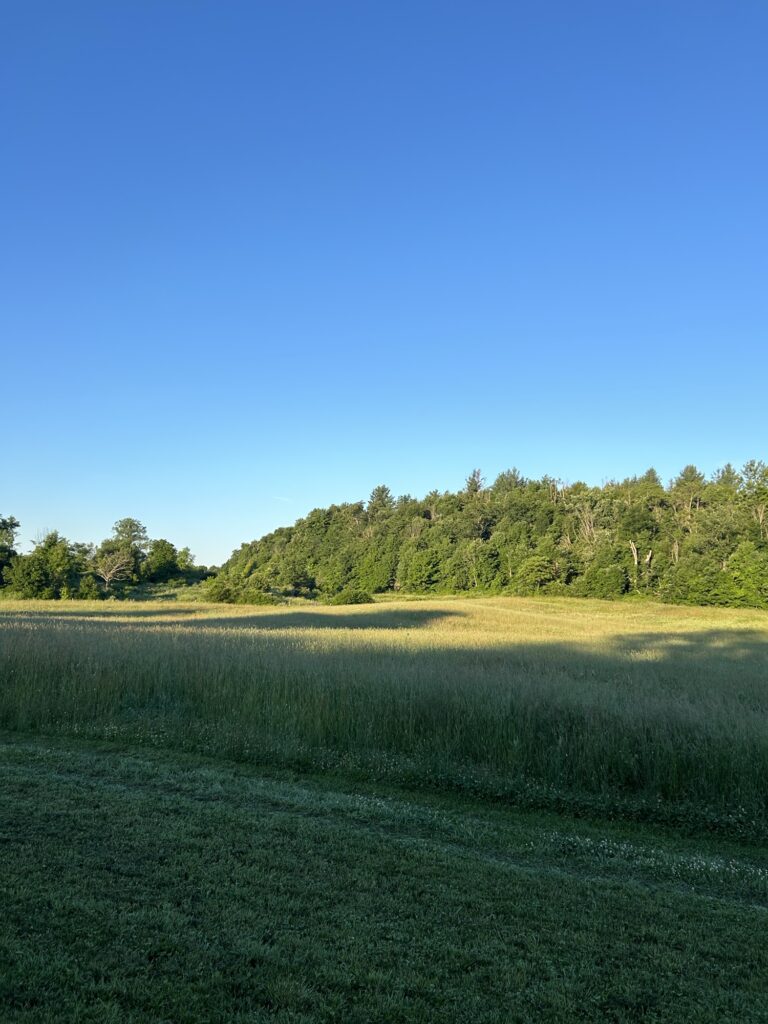
If you recall from following my story I had left Camp Edith suddenly last September in a whirlwind to take up Airstream living at the Homestead project. The thrill of having running water there and the project itself was a draw that I couldn’t resist. Besides I had lived at camp since May anyway. The Airstream had sat idle since 2022. No surprise really my decision when focused in that light. But parts of that story are already sprinkled across these pages leading like a trail of breadcrumbs to this moment. And if I didn’t tell that story properly then that’s mine to consider. But what’s all this got to do with acquiesce? Nothing at that point. Things were about to change for me big time as those days of 2023 slowly ( quickly?) wound down. And I had felt something was wrong but didn’t heed my inner spirit warnings. Fatigue was finding me more and more then. I merely blamed my gathering years. No acquiescence there. But the universe had plans for me I realize now. I was still clinging to my old ways with the tenacity of a greying wolverine. Bad eating habits. Overindulging in beer and hard ciders on occasions that were becoming rather to common some weeks. Not all that problematic so they lay quietly close at hand robbing me of clarity and dulling my thoughts of a higher level of connection to my surroundings. But those old habits had taken time to develop and had become normalized to a degree. But I was lonely and prone to self destructive habits of work and play in a way that didn’t seem to identify as just that. One thing is most certainly true: in that mode of existence I am truly a force of purpose and drive. The work accomplished showed itself all around me. The tiny cabin leaped forward after my two week sojourn in the Adirondacks in October. And in my arteries the sleeping giant was about to awaken. Change was coming and I was blindly unaware of it.
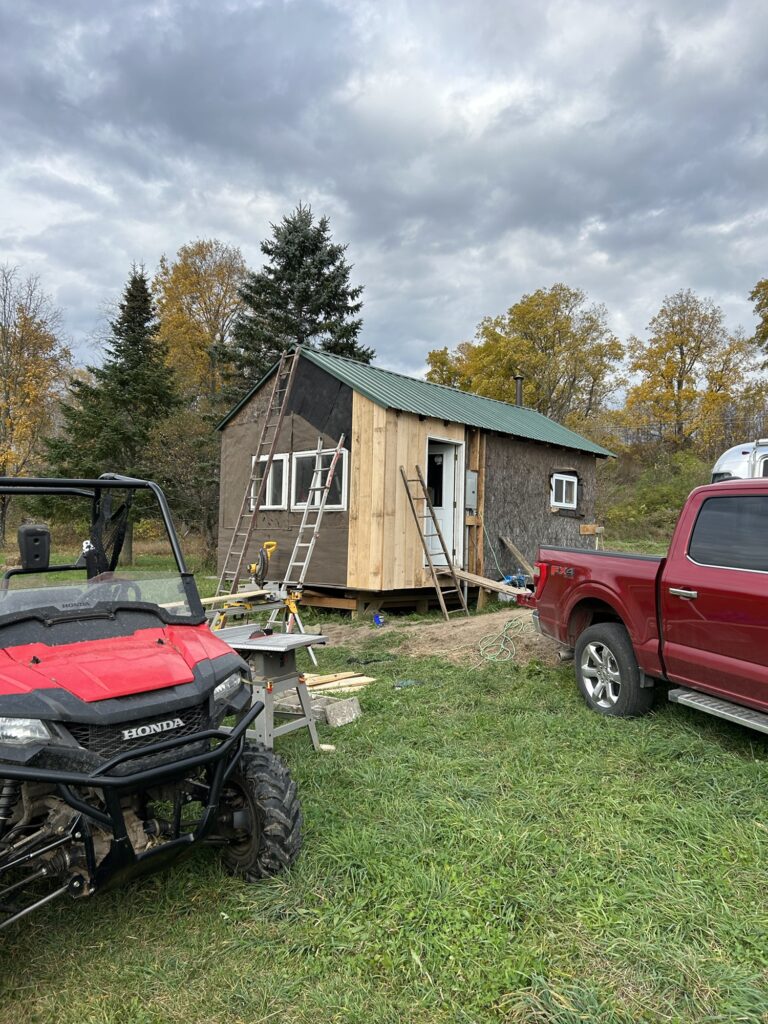
There’s really no need for redundancy in retelling the details of my health situation last January. It’s already here on these pages in a post. I just desired to reflect on the differences between then and now. And the trials of my journey through time. The importance of all this lives in the direction I have taken. Steered as it were by universal energy to find a different way forward. Post January I was adjusting to my new situation. I was attempting to change my diet and gave up my alcohol for close to a month then. I was feeling pretty good but was struggling to a degree with things I couldn’t exactly explain. I can easily say that gratitude for my good fortune was my constant companion! I was happy to be whole and alive! I was staying busy and that always makes a difference in my day to day existence. Alone at night in the tiny cabin’s loft I continued in my manifesting of things that I wanted in my life.And the universe was listening and preparing to answer.
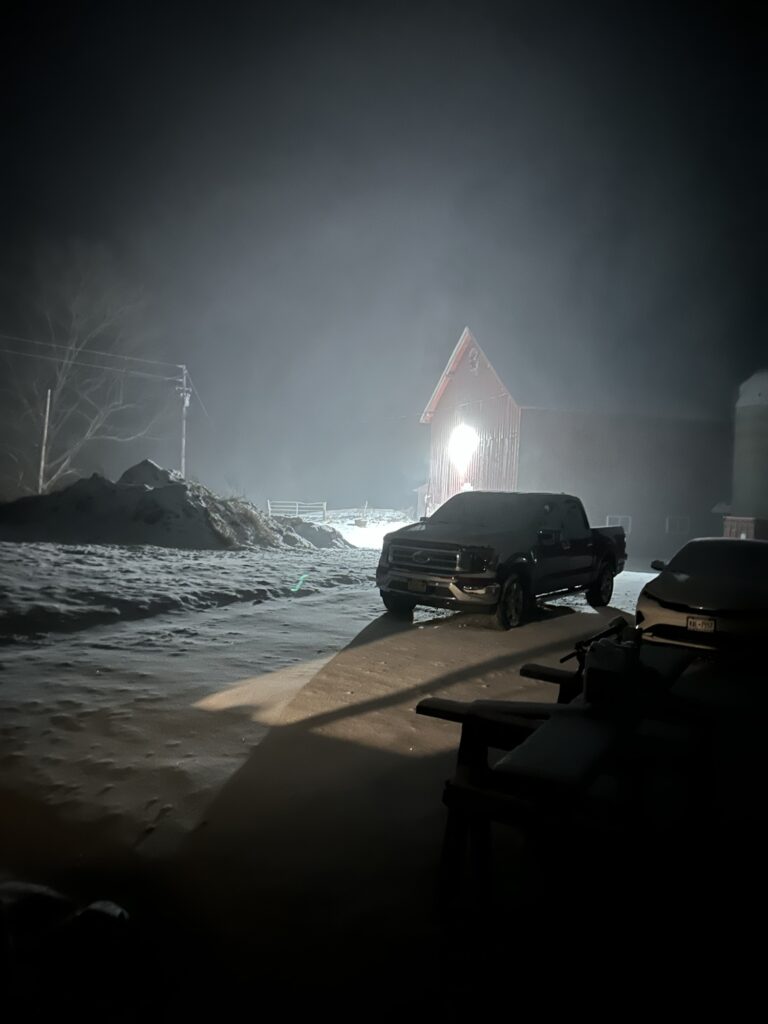
Amy would enter my reality in late January when I was in Saranac Lake volunteering for the Ice Palace construction. It would be late February before we would begin spending any time together. I could easily write an entire series of posts about our new journey together but our privacy is paramount. But she’s solidly within the posts of the past few months. With an improved diet, exercise,and an alcohol free lifestyle a shift began. Time in the Adirondacks has been a big part of this recent journey as well. And I have strayed far from my story! Where is the acquiescence? I might not get the words today. I will try though. So picture a very abandoned Camp Edith. Winterized in a hurry last fall. Packed up and closed up. Rather cluttered from the constant moving that has become my norm these past few years. I have enjoyed my transient lifestyle but it comes with a price at times. But it’s the outside around the camp where it really shows. Leaves everywhere from last years growth. They bury everything with a silent slow drop. Nature doesn’t do this on purpose it’s just the way of things. Left untouched they will cover up lots of our things left on the ground. And then there’s the growth of trees and brush around the camp. Much of the section in front of the camp can’t be maintained easily due to its steep terrain. Not to mention the poison ivy I need to avoid at all costs! I am super allergic to it! Subsequently we had lost most of our view of the lake from our yard and front porch gradually the past few years. Even the camp roof is being covered by nature. Moss grows on the shingles in the shaded areas trapping leaves and pine needles. There’s nothing new in any of this. However there’s extra cleanup from the salvage log event that occurred last fall. I was feeling a little overwhelmed this spring when we first stopped by Camp Edith. And I realize now that I have been avoiding being here because of the work that needed to be done. But Amy expressed an interest in spending time at camp so I agreed that we should! And I am slowly getting the outside areas brought into a useable state. That’s where acquiescence was discovered.
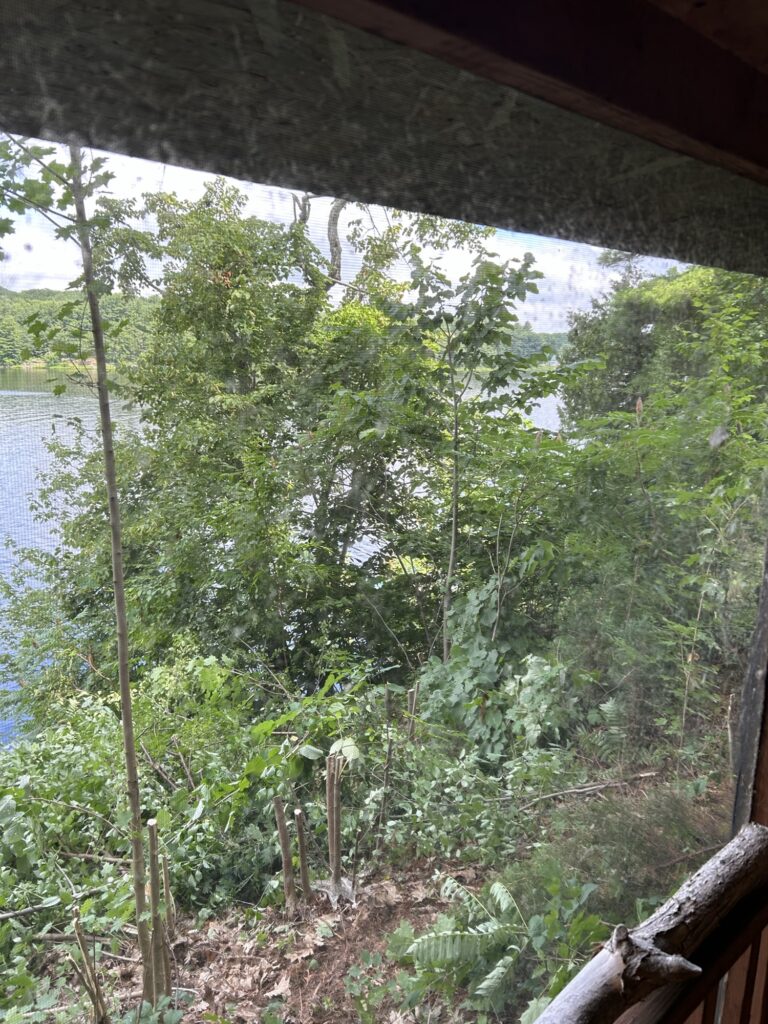
The mosquitoes were a problem the moment we got to Camp Edith. They were hunkered down around the open section of the front porch. Shaded by the overgrowth down front they brought a bothersome war to us so I decided to fight back. I decided to tackle the overgrown area out in front of the camp where they were hiding out of the sun.I wore my hip boots and saw chaps to avoid the poison ivy. What an uncomfortable combination!😂I chose my mid length chainsaw for its horsepower and length. It was tricky cutting and safety was crucial. Once I started I cut nonstop until the clearing was completed. I was left quite the mess to clean up! The difference is huge though! Our view is back again and the mosquitoes have left for more settled locations. And where is the acquiescence in all this? It’s coming!
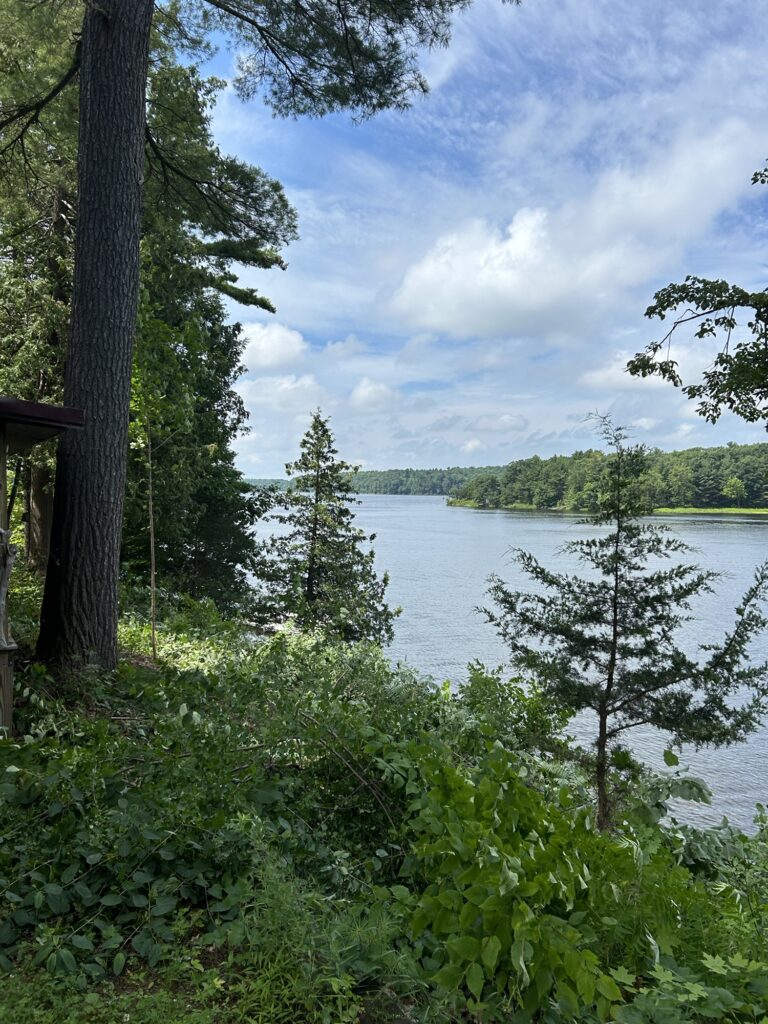
This morning I was out working on a section of lawn under the two huge maples where we park our vehicles here. They are truly massive and discard thousands of leaves each season. But they are stately and their shade is priceless! I have walked and lived under their presence all my life. Cleaning up under them is tedious and time consuming but is an annual event when we chose to open up camp. I haven’t devoted all that much time to lawn work but it’s becoming a priority now that the inside is under control. It was while working out under the big maples this morning that the word acquiesce came to me. I was thinking about music actually when I remembered the old song by the band Oasis. Acquiescence was part of their 1995 album “What’s The Story Morning Glory”. I hadn’t heard the song in years and the meaning of the word suddenly tied things together for me! What was I struggling with all these months? My reluctance to accept my new situation. My health changes. Protested in mood swings and anger at times. I realized that I was being ungrateful at my good fortune . Things had changed for the good so why was I struggling? Was my anger due to my decision to quit drinking to aid in my health journey? That has been a challenge after years of engaging in that past time. But the resulting mental clarity has been refreshing.Was I frustrated by lack of energy that sometimes plagues my days? Or my ongoing knee issue? That’s being addressed properly I believe. So what is it exactly? The answer that suddenly came to me might be hard for you to fathom. I realized that I was protesting nature in some strange manner. And that it was futile! And it’s all connected to my health journey. Probably lost you now!
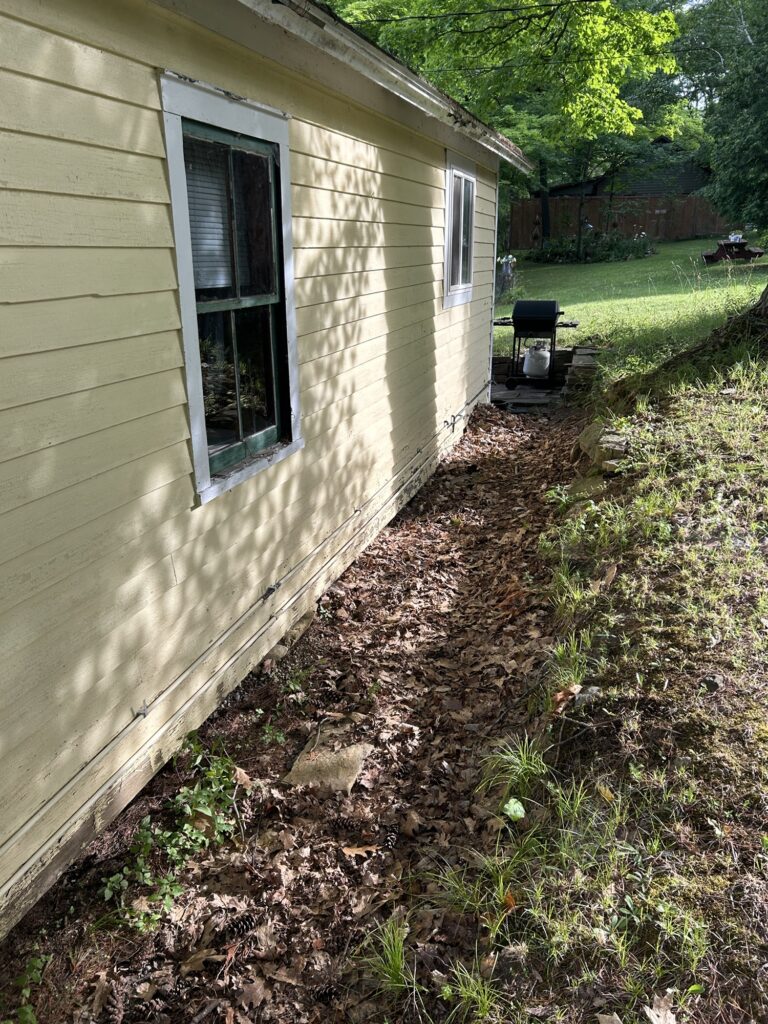
Acceptance that nature is far more powerful and lasting then I will ever be might be a difficult thing to even consider but it’s true. Everything that I own that is subject to the outdoors is under the control of nature. Rack up those leaves! Mow that grass! Cut the brush! And on and on it goes. Take a break and see where you land. Time passes. Seasons pass. Nature doesn’t take a break even when I need to do so. What was I feeling? Mortality? Perhaps. Fatigue? At times. Something beyond my comprehension that was showing itself suddenly in my new situation? Was the shift of new found direction to much for me to steer into? Acceptance is key to this moment in time. Acceptance that I can’t ever beat nature at this annual dance of seasonal cycle. So I simply just need to find the best way to flow with the season. It’s a balance thing. A recent post that I listened to spoke of the fifth dimension. It’s an interesting consideration once I realized that I have lived most of my life living in the third. My connections to nature are the bridge to the fifth dimension. Ascension becomes the new word as acquiescence merely becomes a word to reflect upon. As in rising to a new level of consciousness. No I am not on drugs or alcohol! Rather the contrary. I need further clarity to embrace the change. To ascend to a higher place in harmony with nature will be painful it appears. For me especially. It may be hard for my loved ones to understand. It will present grand challenges. And what exactly waits in that higher state of connection? That’s the mystery and the draw. But there are those who understand and encourage my efforts. Learning never ends I feel. This is to be the year of tremendous change. Further growth I hope. And while writing this the lawn hasn’t cleaned itself. Back to it soon. There’s no hurry really. If I don’t finish anything will it truly matter in a larger picture? No course not! Time will pass regardless as will the season. I accept with no further protest if I am truly ascending. And you are far from home in the forests of Tazmania. I am very much alive in this moment. It is enough. ✍️

